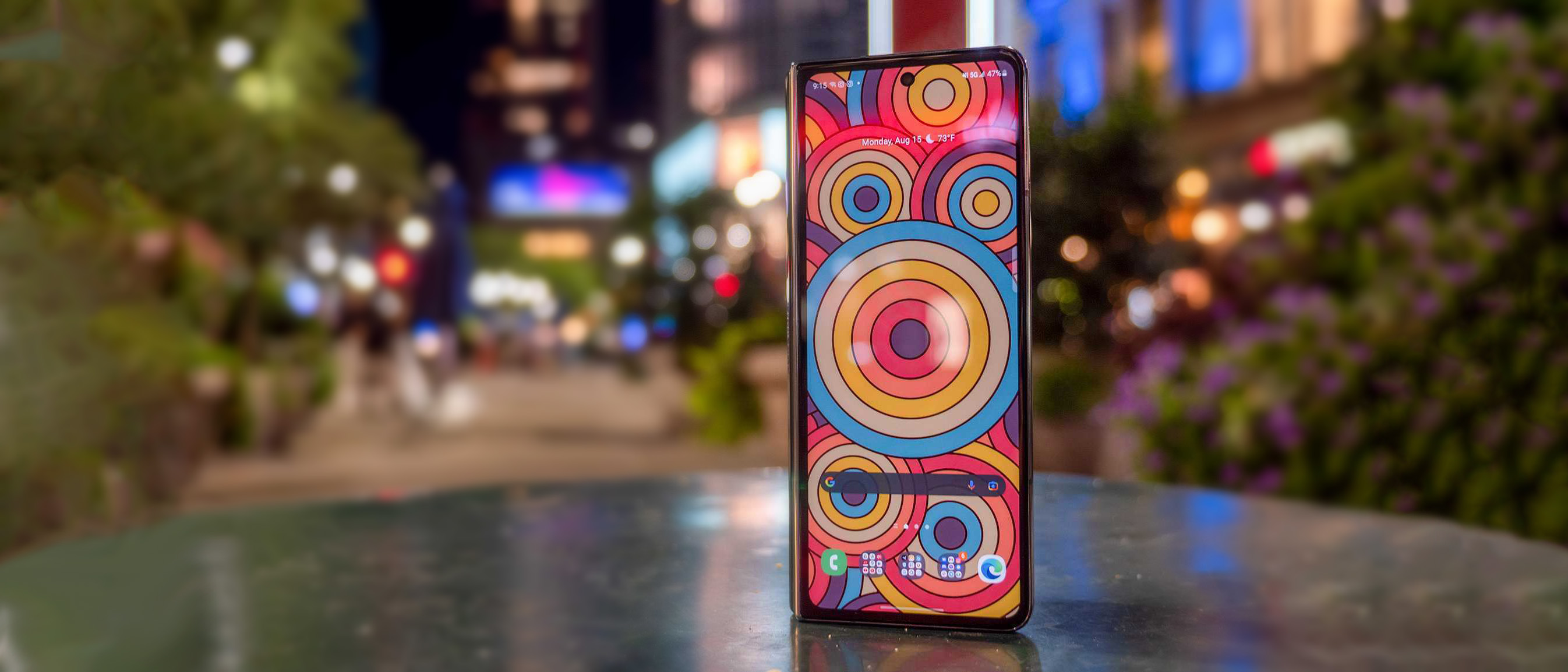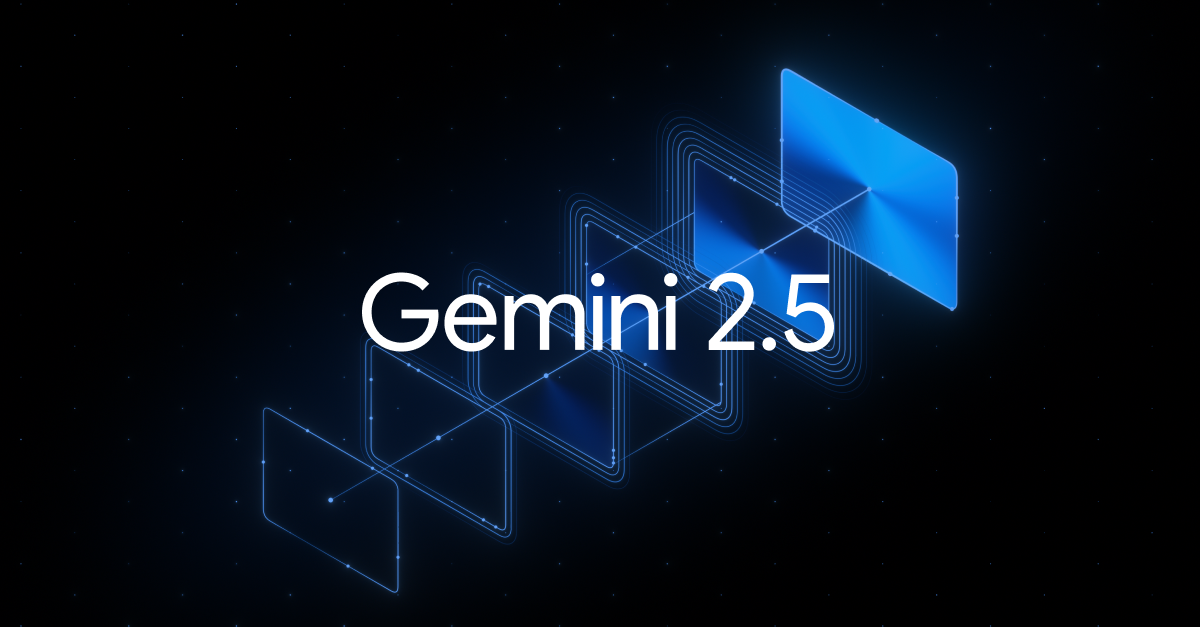Android Central Verdict
It's hard to imagine a phone getting much better than this. The Z Fold 4 does it all: from taking great pictures, to multitasking like a laptop. Sure, it's got a high price tag and the hardware can be a bit bulky, but it packs a tablet and a phone into one amazing device. That, complete with better performance, battery life, and cameras than the previous generation, and you'll find the Fold 4 is unmatched in its prowess.
Pros
- +
Superb performance and battery life
- +
Two different-sized displays
- +
Great new multitasking features
- +
Flagship-level cameras (finally)
- +
Wide compatibility with chargers and accessories
- +
Years of promised software support
Cons
- -
Price makes it a tough sell
- -
No holster for the S Pen
- -
Display crease is still visible
- -
No dust resistance
Why you can trust Android Central
Few smartphones can be considered unique these days, and even fewer have an experience as honed in as what the Galaxy Z Fold 4 delivers. On paper, it looks like little more than a marginal improvement over last year's device. It's a little slimmer, lighter, shorter, and wider. It's got a faster processor, a better camera, and a sleeker hinge.
But the experience itself is far more than the sum of its parts. It's the continued perfection of something that was already so impressive in and of itself. A tighter execution of a fairly new concept, that continues to make more and more sense for a group of users not willing to settle for anything but the biggest and best Samsung phone ever made. Those who want a smaller phone should seriously consider the Galaxy Z Flip 4, instead.
Using the Galaxy Z Fold 4 continues to feel like using an object from a near-future time. It still turns heads every time I use it and, thanks to the new taskbar and a few other refinements achieved by integrating Android 12L into Samsung's One UI, the Fold 4 reasserts Samsung's domination in the foldable space. Even with a few flaws, it's still the best phone I've ever had the pleasure of using. And I've used a lot of phones.
About this review
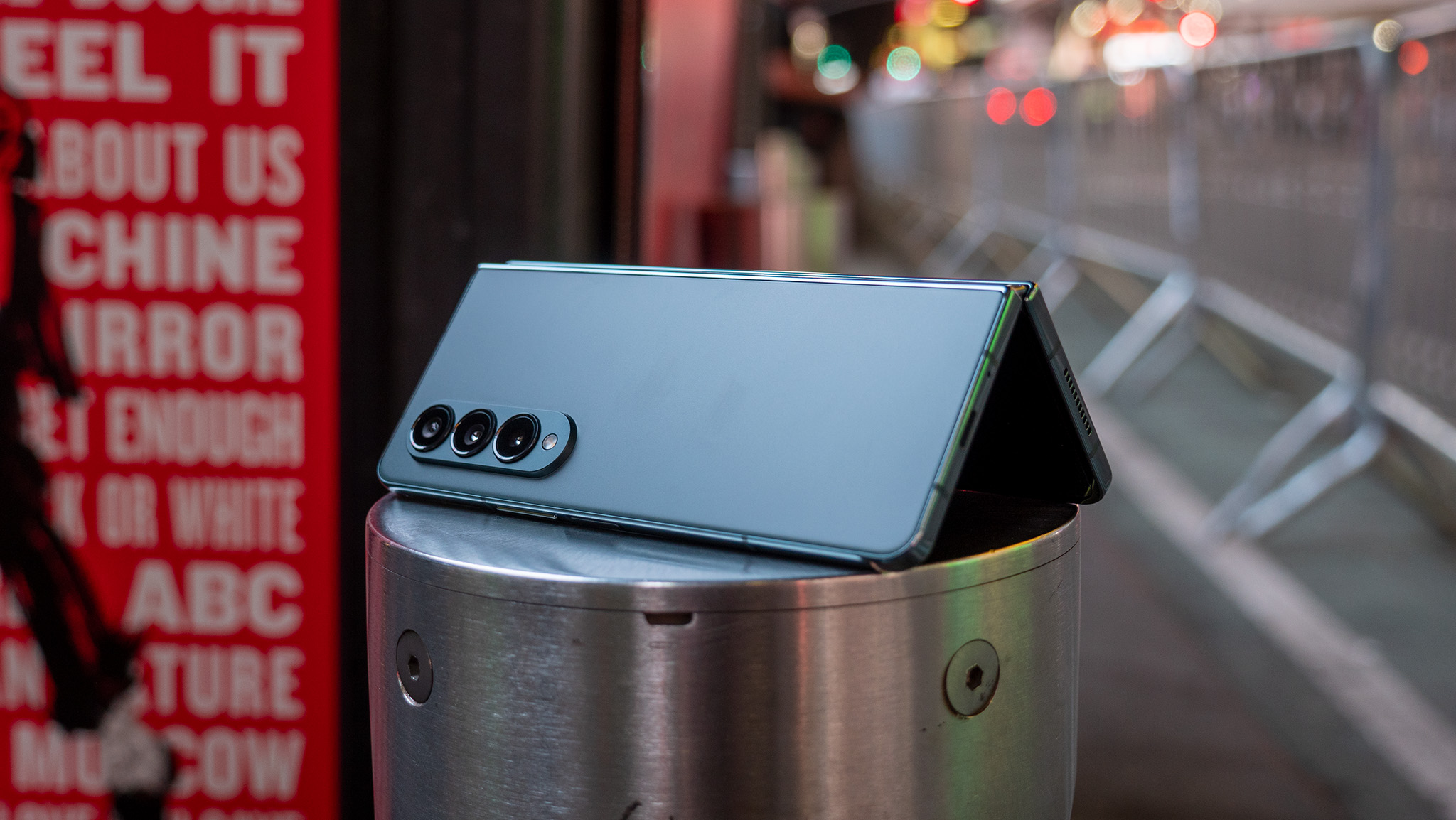
I've been using the Graygreen colorway of the Samsung Galaxy Z Fold 4 since August 10, 2022, on the T-Mobile network in North Carolina and New York City, U.S.
Since starting the review, there have been no updates to the software. My review Z Fold 4 was running Samsung One UI 4.1.1 with the July 2022 security patch.
Samsung provided the Fold 4 review unit to Android Central.
I typically use Backdrops for my wallpapers, which can be downloaded for free on the Google Play Store.
Samsung Galaxy Z Fold 4: Price and availability
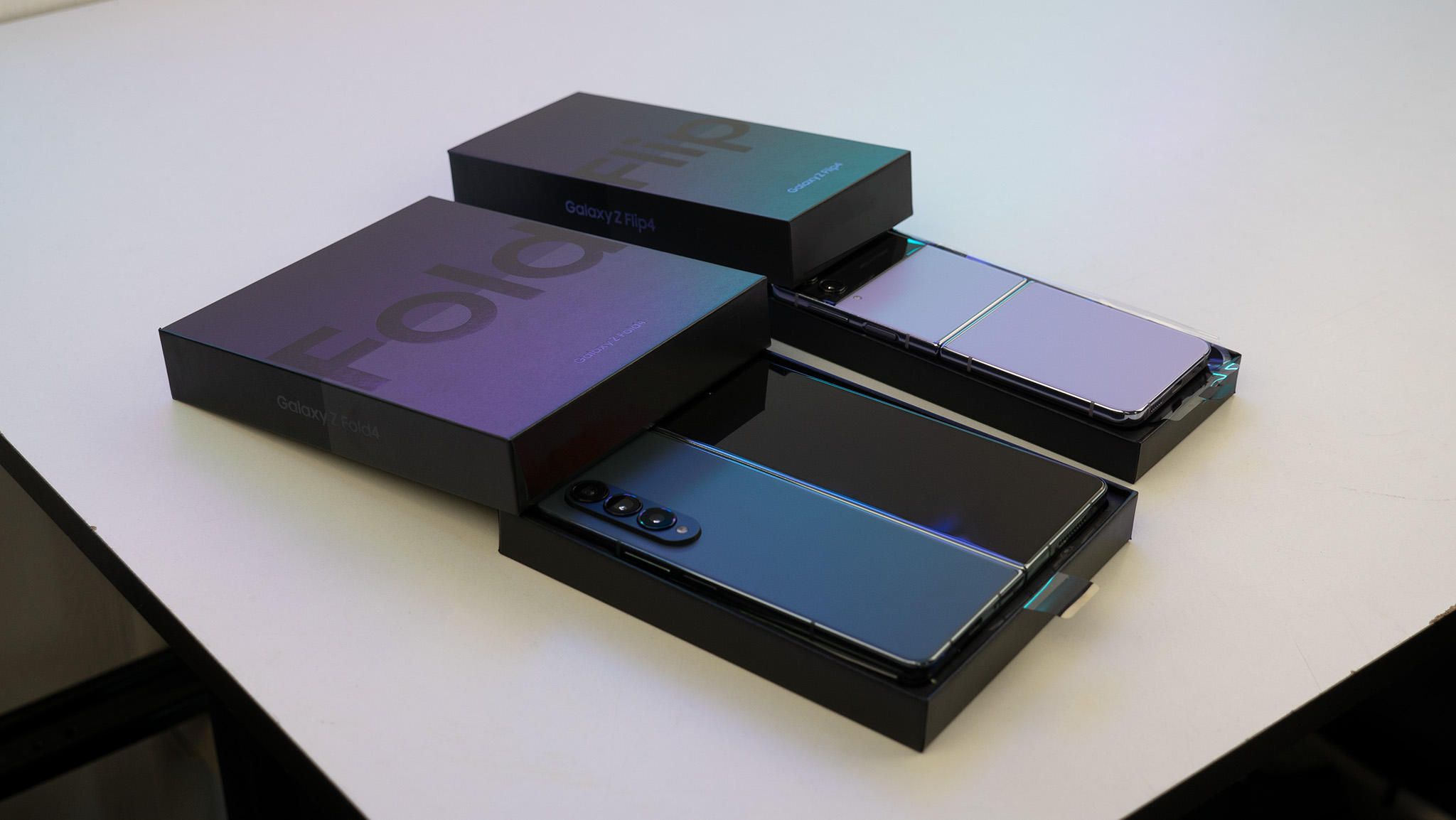
Preorders for the Galaxy Z Fold 4 began on August 10, 2022, and the device is available from August 26, 2022, on all major U.S. carriers, unlocked, and internationally.
Samsung sells the Galaxy Z Fold 4 for $1,799 unlocked in the U.S. and offers the usual suite of trade-in deals to help reduce the price. U.S. carriers and retail outlets like Best Buy also offer similar deals, as well. The best Galaxy Z Fold 4 deals often reduce the price by about half with a trade-in.
The Samsung Galaxy Z Fold 4 ships in three colorway choices: Graygreen (which doesn't look green at all), Phantom Black, and Beige.
Samsung Galaxy Z Fold 4: Design and display
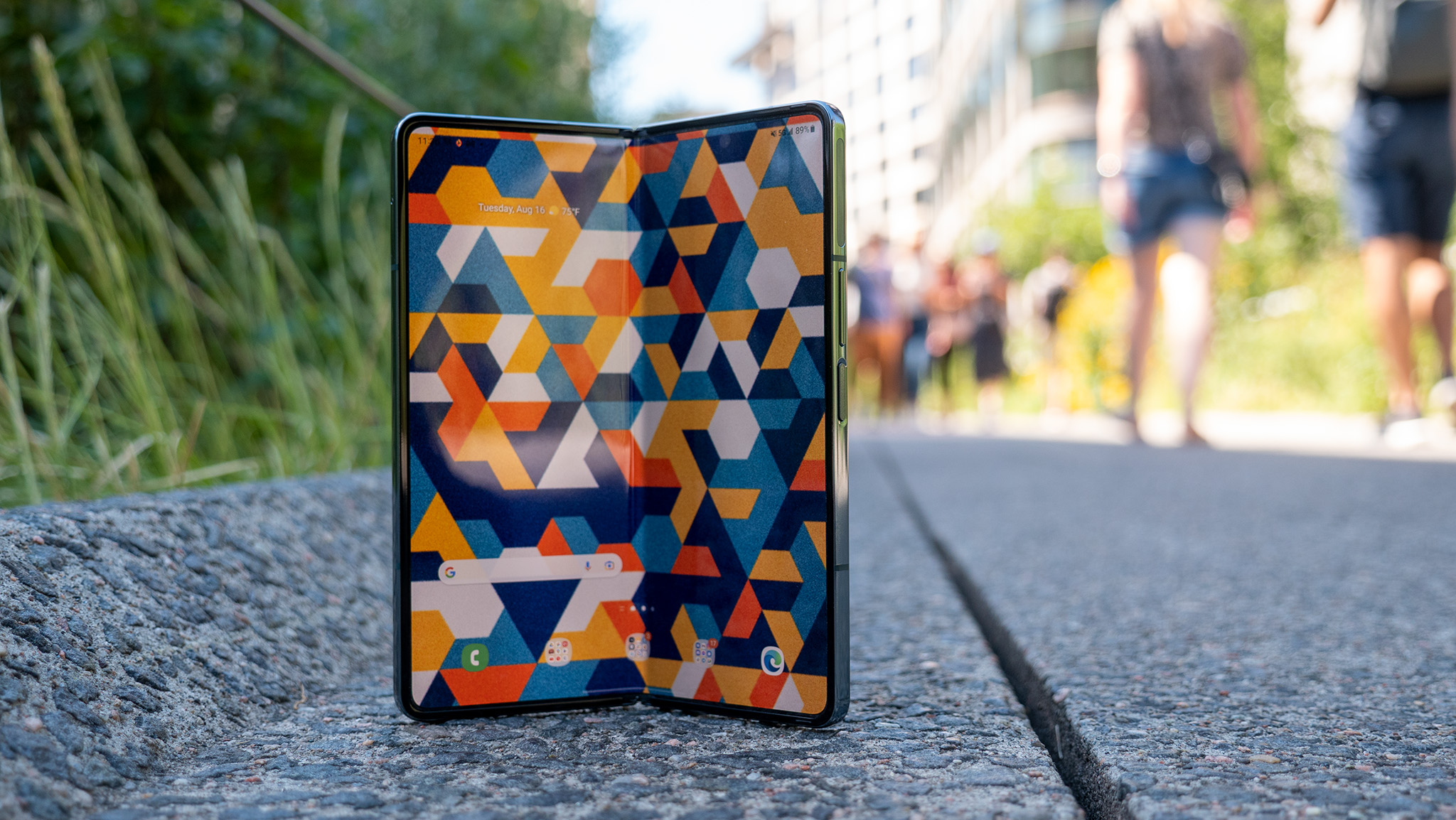
If you were to take a cursory glance at the Galaxy Z Fold 4, you'd be forgiven for thinking it looked identical to the Fold 3. Samsung established its design language with the Z Fold 2, and has only tweaked it in the two generations since. While the Fold 3 was physically identical to the Fold 2, the Fold 4 slims things up and squares off the sides just a bit.
In total, Samsung was able to reduce the height of the Z Fold 4 by 3mm when compared to the Fold 3. Additionally, the device is now 0.8mm wider and 0.3mm slimmer when unfolded than the Z Fold 3. It's also 8 grams lighter, which is really only noticeable when directly comparing the two devices. At 242 grams, it's still a very heavy device.
| Category | Samsung Galaxy Z Fold 4 |
|---|---|
| Display | 7.6-inch Dynamic AMOLED 2x, LTPO (1-120Hz), 2176x1812, 21.6:18 |
| Cover display | 6.2-inch Dynamic AMOLED 2x, LTPO (48-120Hz), 2316x904, 23.1:9 |
| Chipset | Snapdragon 8+ Gen 1 |
| Memory | 12GB |
| Storage | 256GB, 512GB, or 1TB |
| Rear Camera 1 | 50MP, ƒ/1.8, 1.0μm, 85-degree FoV (main camera) |
| Rear Camera 2 | 12MP, ƒ/2.2, 1.12μm, 123-degree FoV (ultra-wide) |
| Rear Camera 3 | 10MP, ƒ/2.4, 1.10μm, 3x optical zoom |
| Cover Camera | 10MP, ƒ/2.2, 1.22μm, 80-degree FOV |
| Inside Camera | 4MP, ƒ/1.8, 2.0μm, 80-degree FOV |
| Battery | 4,400mAh (dual 2,200mAh batteries) |
| Charging | 25W fast charging, 10-15W fast wireless charging 2.0, 4.5W reverse wireless charging |
| Weight | 263 grams |
| Dimensions (folded) | 67.1 wide x 155.1 tall x 15.8mm thin |
| Dimensions (unfolded) | 130.1 wide x 155.1 tall x 6.3mm thin |
| Water and dust resistance | IPX8 |
| Colors | Graygreen, Phantom Black, Beige, Burgundy (Samsung.com exclusive) |
Much of the slimming down was achieved through a new hinge design that is 6mm narrower, and noticeably slimmer, when folded closed. This new hinge is easier to fold and unfold than last year, yet it also feels tighter than the Fold 3's hinge.
For me, that's quite a relief. There have been plenty of times in the last year that I nearly dropped the Fold 3 while attempting to open it because the hinge held very tightly together when closed, and Samsung offered no lip to easily pull it open from on the side.
There's no lip this year, either, but the act of pulling the phone open isn't met with as much resistance. It's also much smoother to close and sports a new, more padded closing snap that feels and sounds great.
The Fold 4 also folds flatter than the Fold 3 thanks to this new hinge. It's one of those things you'll really only notice if upgrading from the Fold 2 or 3, and it's very welcome.
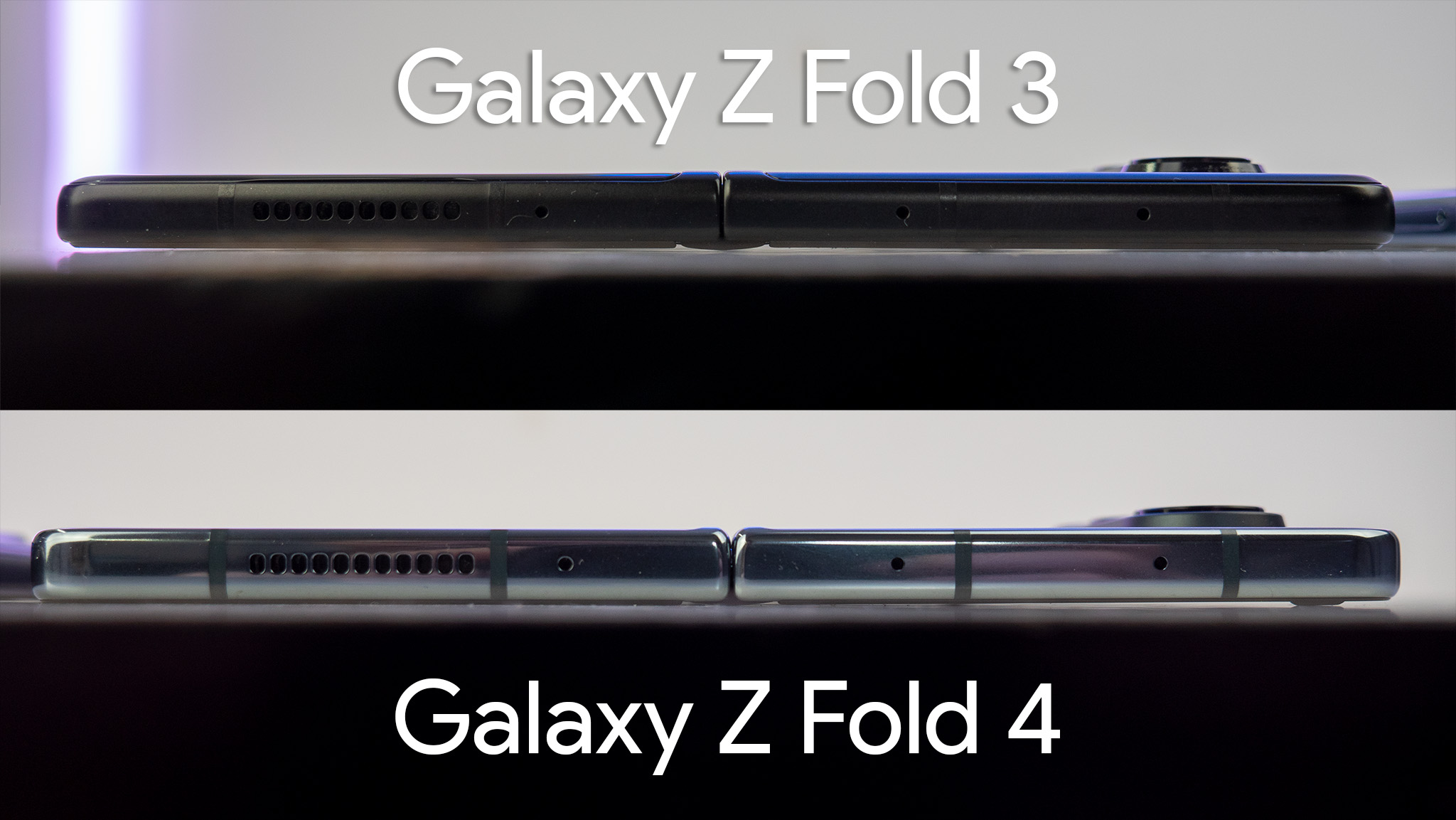
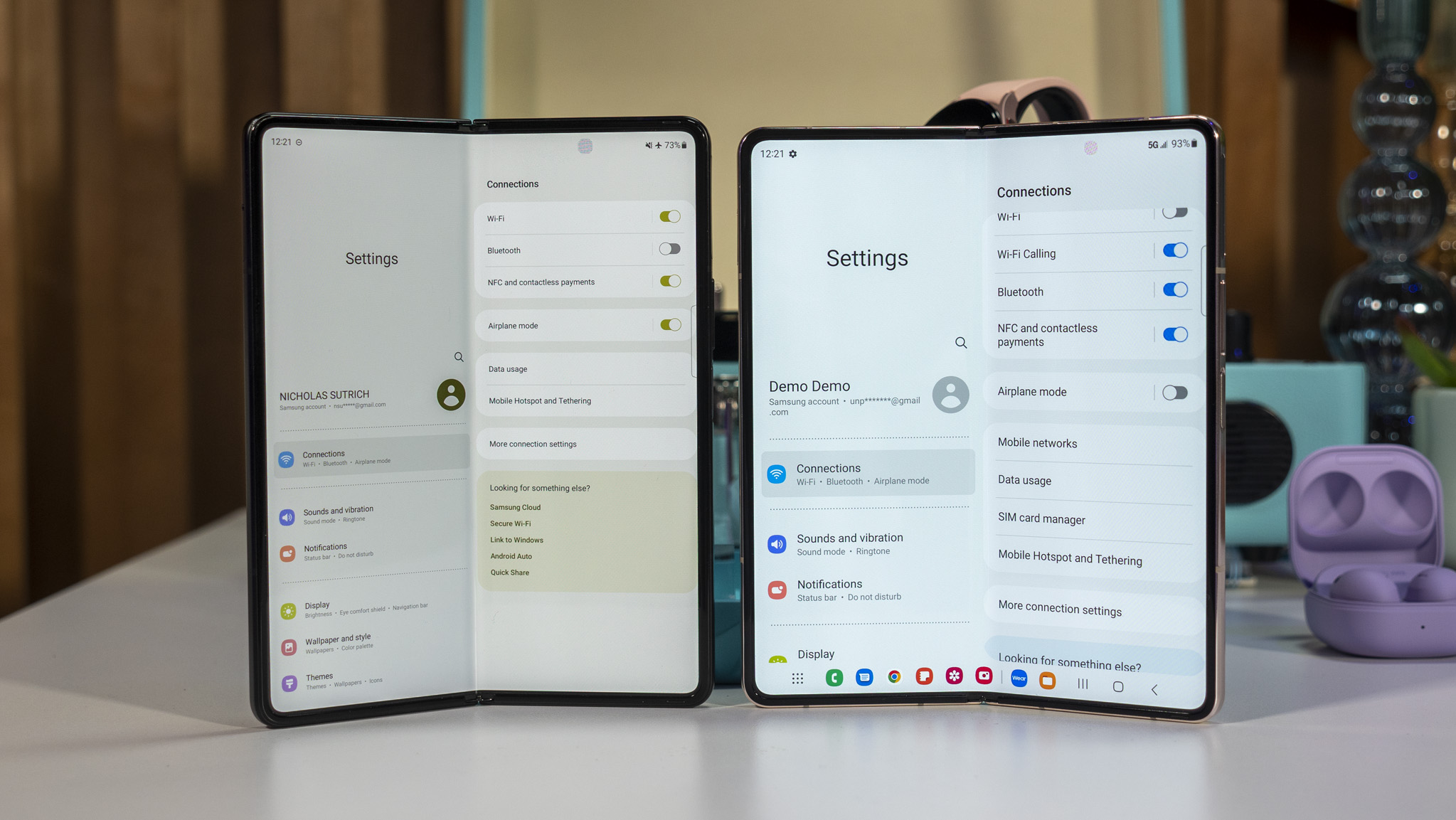
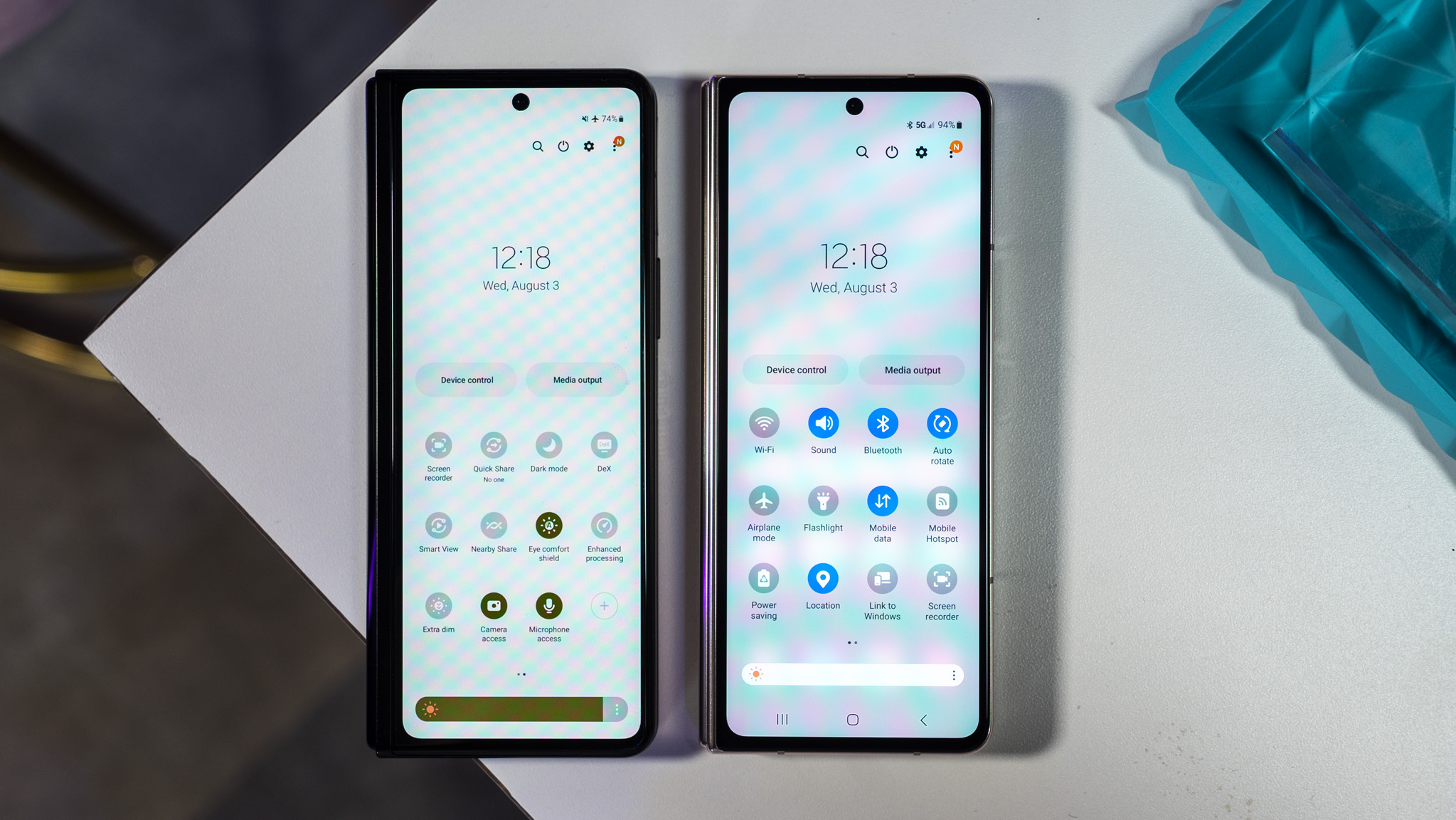
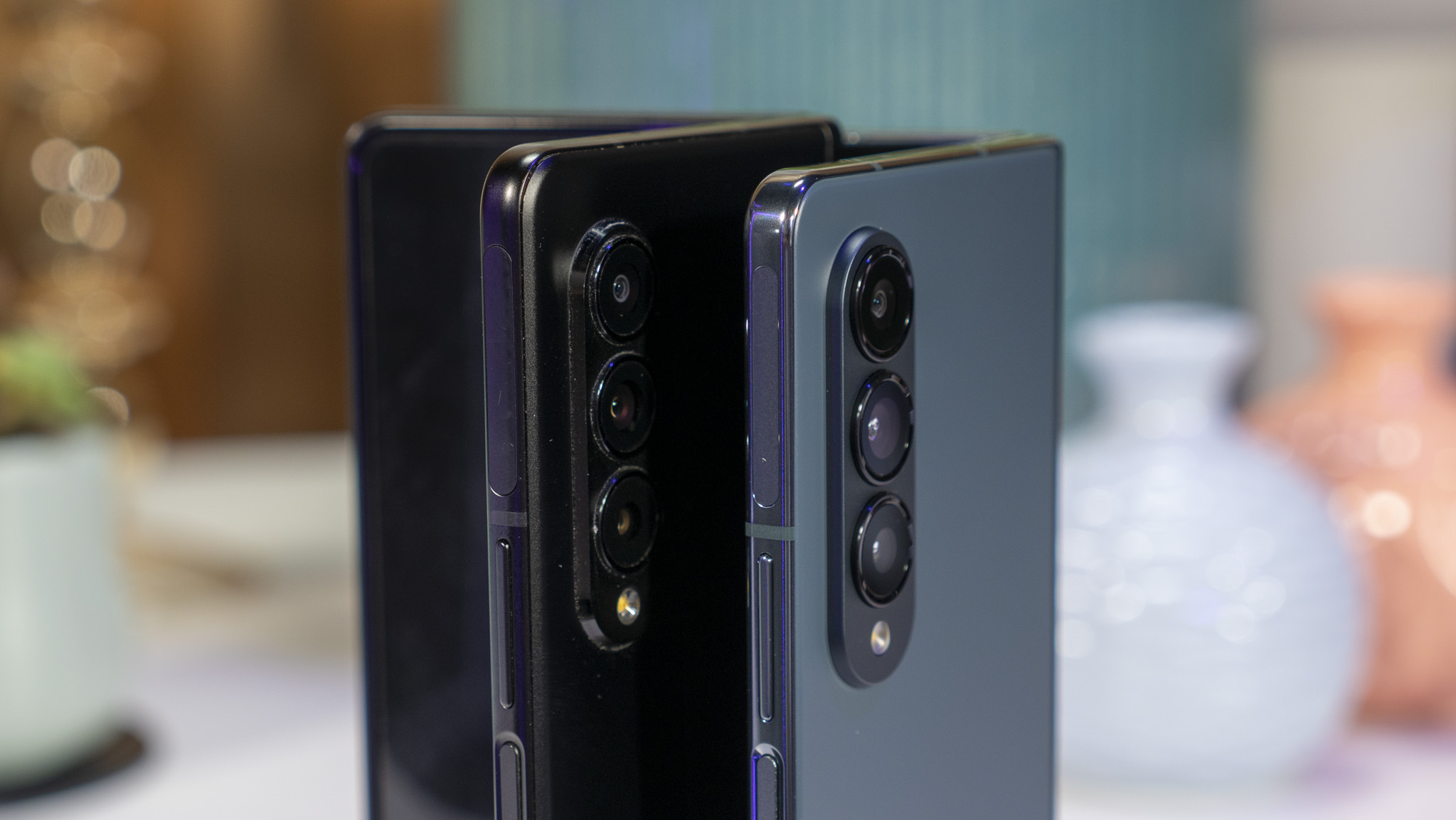
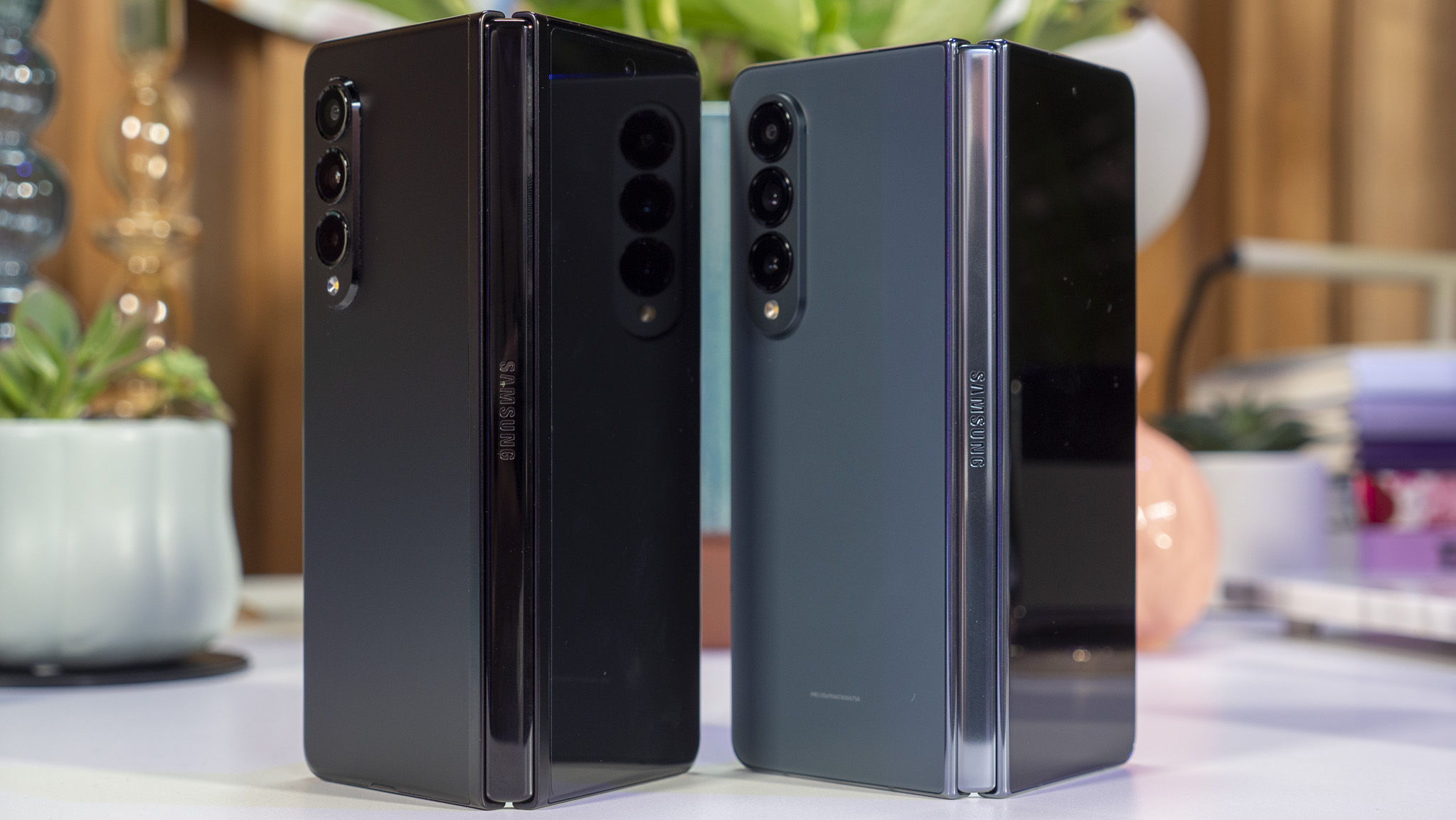
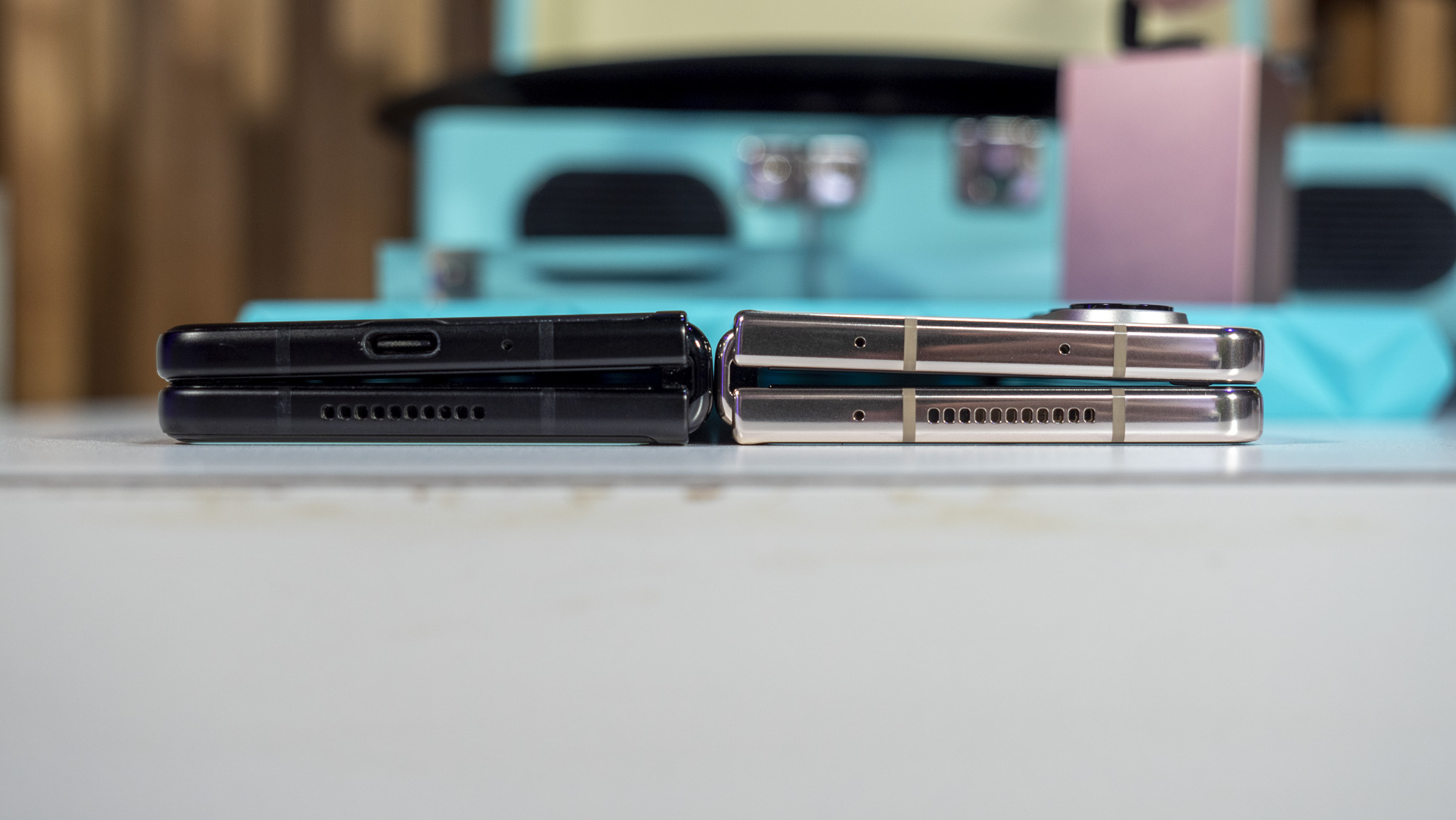
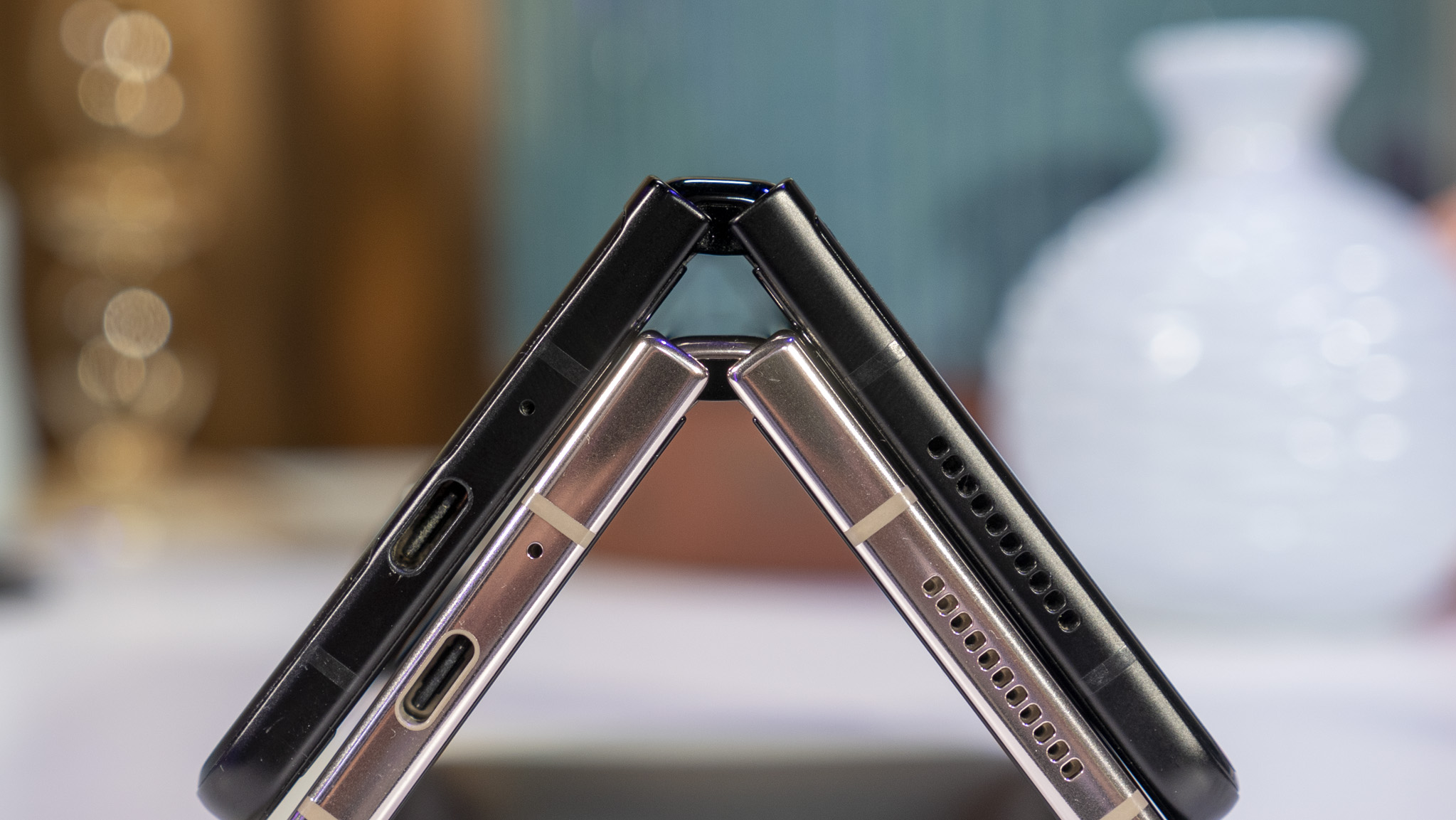
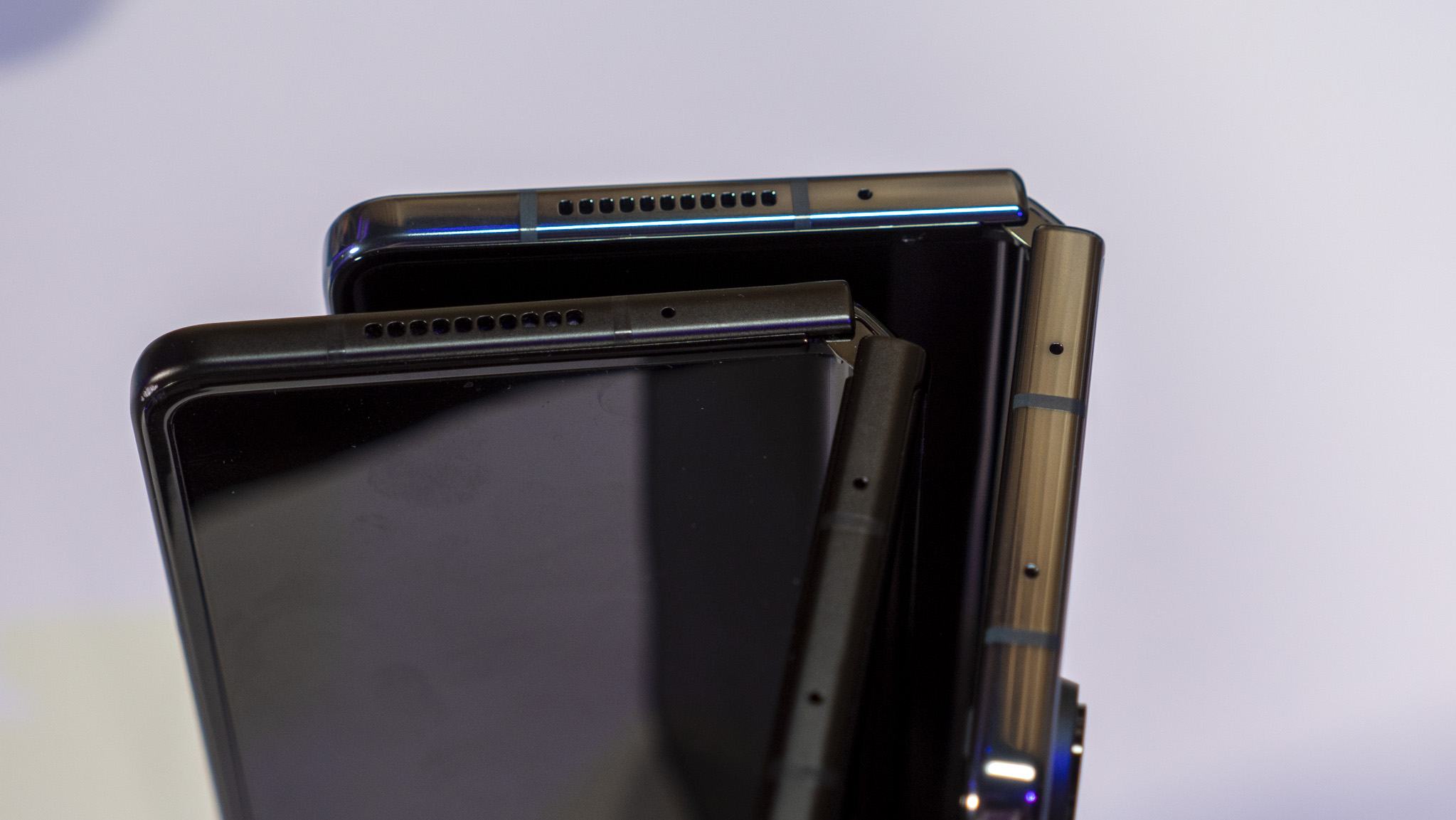
The wider outer display of the Fold 4 is one of my favorite changes from the Fold 3. It's just so much more practical to use.
You'll no longer see a thick bezel on the outside (left) edge of the Fold 4 — as was the case with the Fold 2 and 3 — rather, it's much narrower and only about 2x the width of the bezel on the right side. Samsung also reduced the bezels around the outer screen to further take advantage of the physical real estate of the Fold 4's heft.
It looks like a small difference in person — and you can't see it at all on paper — but the slightly wider display makes all the difference in the world while typing. On the Fold 2 and 3, I regularly "fat-fingered" the keyboard and pressed the wrong key because the screen was so darn narrow. This far, I haven't done this once with the Fold 4 outside of the normal adjustment period when moving between phones with screens of a different size or ratio.
Personally, this is one of my top favorite changes between this generation and the last. I can't begin to tell you how frustrating typing on the Fold 3's outer display was some days. That no longer seems to be the case with the wider outer screen on the Fold 4.
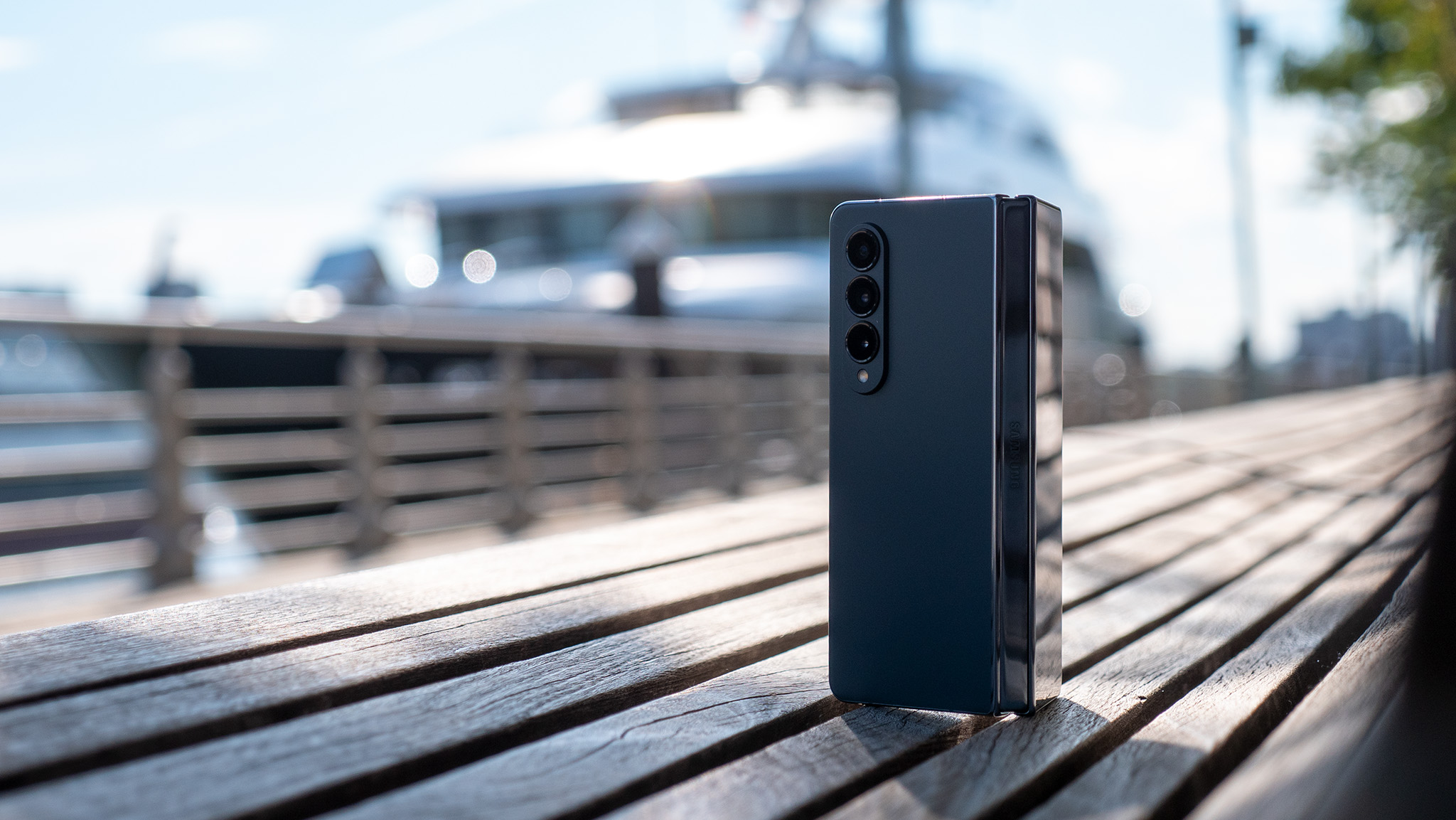
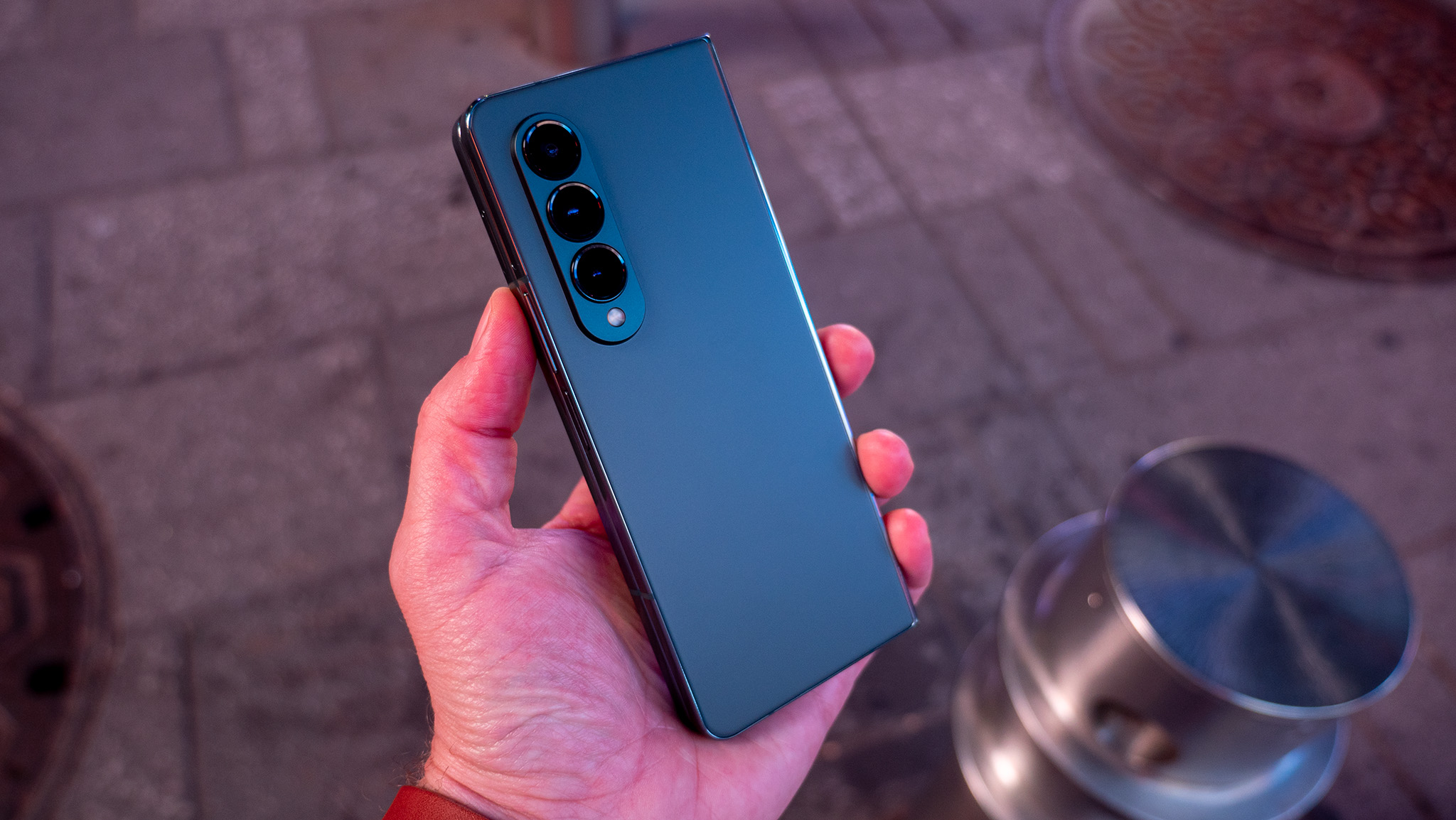

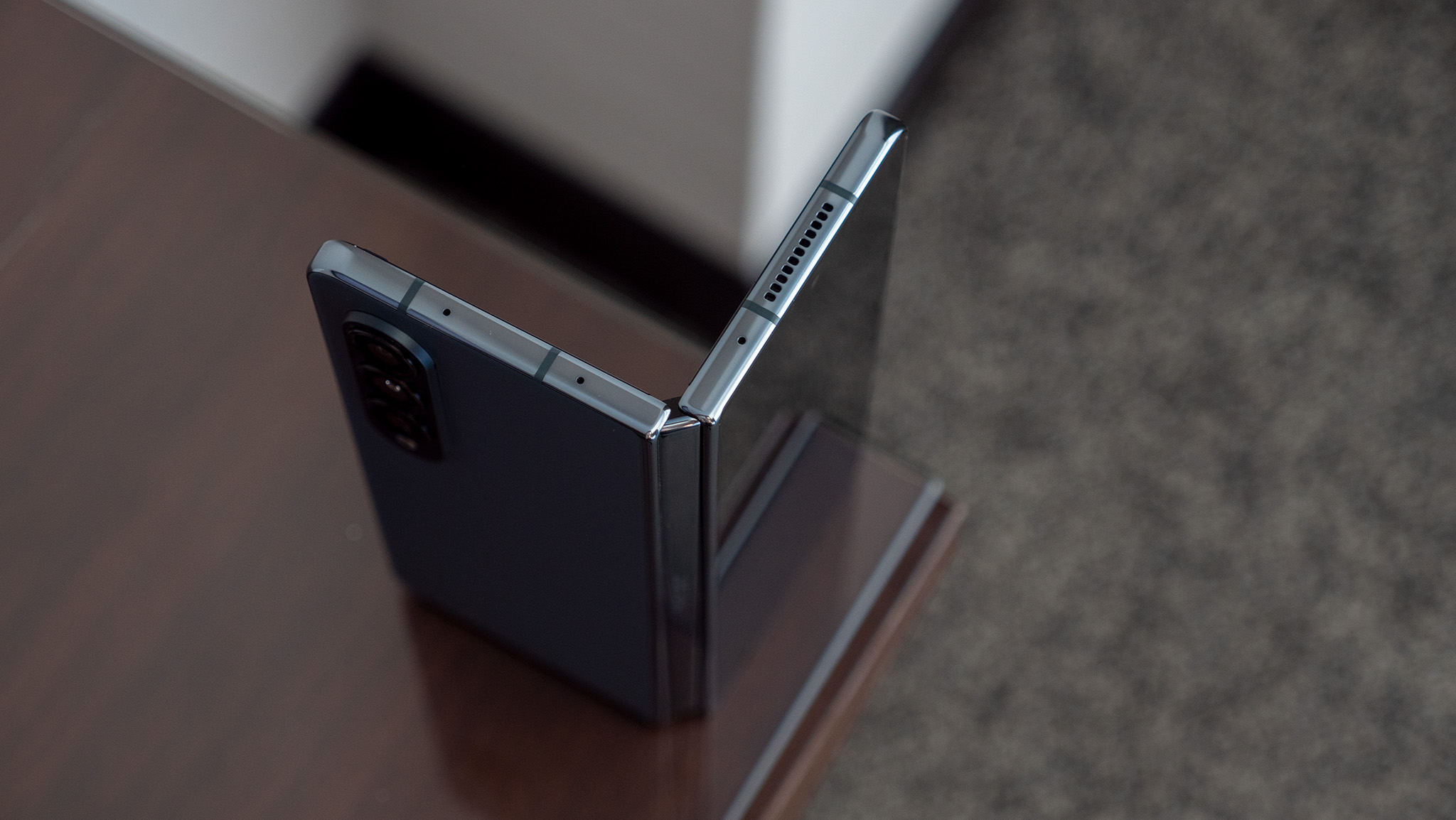
The new sub-pixel design on the under-display camera gives it better photo and video quality, and it even makes it better hidden than on the Fold 3.
Samsung noted that the inner display was also now a bit wider and shorter, making the display friendlier for videos with aspect ratios of 16:9. While that might technically be true, I can't say I really noticed a difference in practice. Given that many social apps now prefer to show tall portrait video, I can't say there are too many opportunities to find this newer aspect ratio as an advantage.
The bezels on the inner display have also been reduced, but that's not the most impressive change for immersion. That award goes to the under-display camera, which is now better hidden than before. Looking more closely, you'll see that this year's design is far more rounded than last year's and features a completely different sub-pixel design.
In addition to being better hidden, this new sub-pixel design also makes for cleaner, clearer pictures that look much higher resolution than last year's even if the camera didn't get upgraded. Check out the camera section below to see the difference.
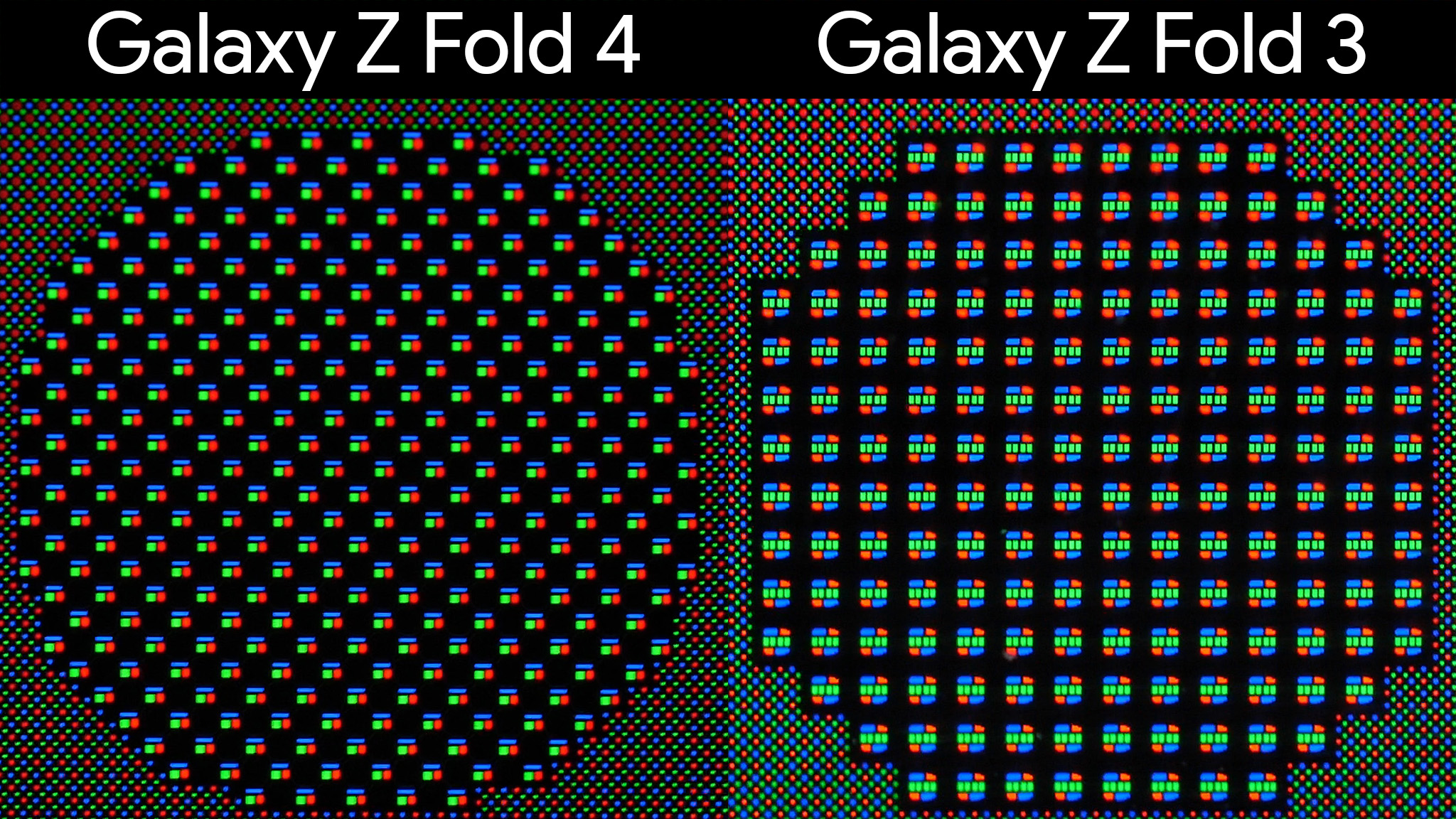
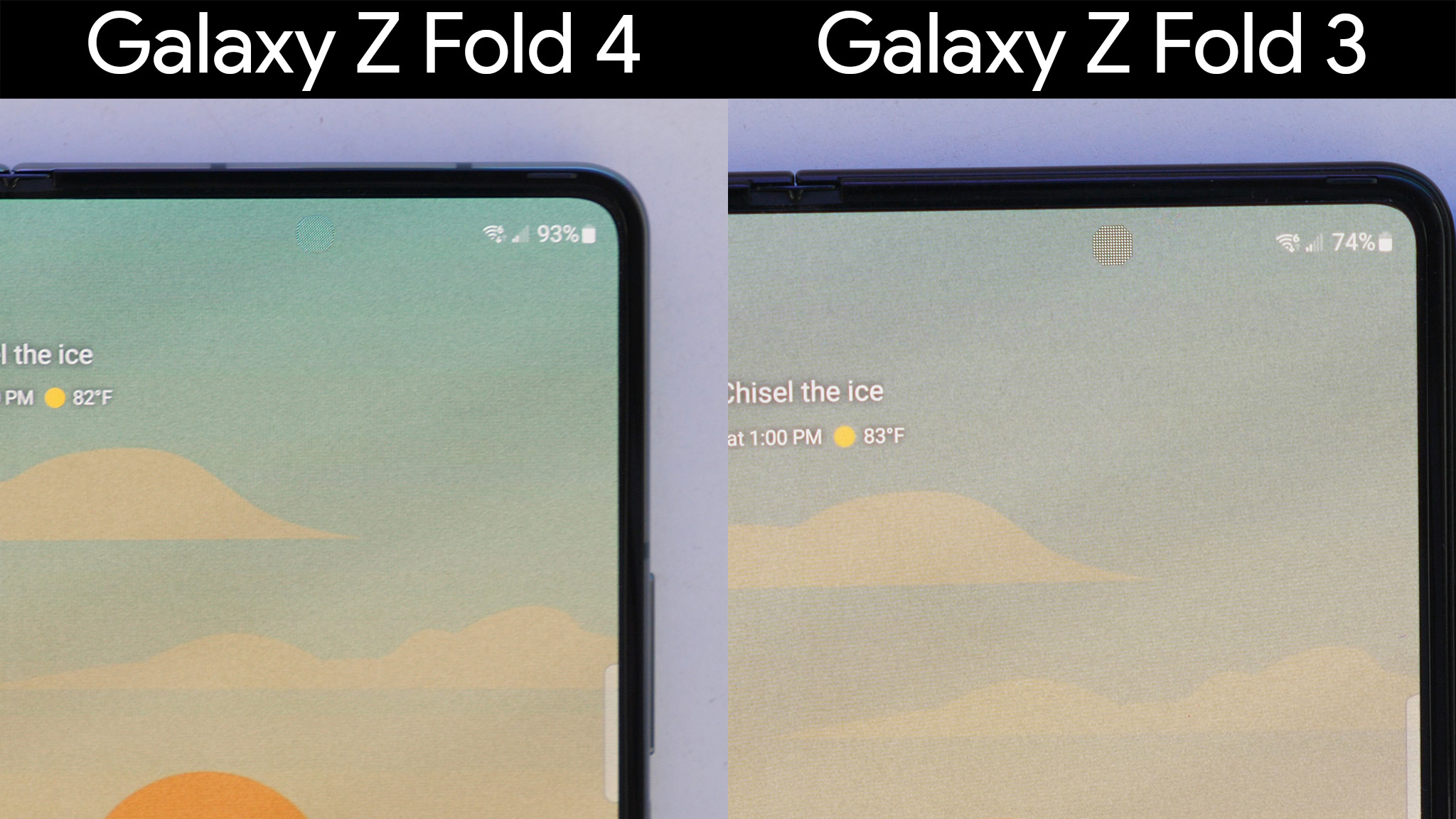
Stronger glass and better screen protectors should help keep these displays looking gorgeous for even longer than before.
Samsung no longer ships the Fold 4 with a screen protector pre-installed on the cover screen — likely owing to the presence of Gorilla Glass Victus+ on that display — and while the inner display's screen protector is made of the same material as last year, it should work better than last year's. Samsung enhanced the adhesive and application to help prevent peeling and bubbles, which appeared on some Fold and Flip phones.
While I never had this issue on my Fold 3, my wife's Flip 3 screen protector began peeling and cracking around the hinge portion about eight months into ownership. Samsung will repair this for free, but it'll use up the one free screen replacement in the process, and Samsung doesn't recommend replacing the protector on your own due to the semi-fragile nature of the ultra-thin flexible glass.
Thankfully, this year, that ultra-thin glass has been strengthened by about 45%. Samsung says this is due to a combination of two things: stronger materials, and better optimization of the layered structure of its ultra-thin glass.
Lastly, I'd like to gush about the speakers Samsung outfitted this phone with. This pair of Dolby Atmos-tuned stereo speakers are truly superb, delivering great volume, balanced sound, and immersive audio. Playing games on the Fold 4 is a joy because of the screen size, and the cherry on top is the virtual surround sound that emits from this lovely pair of speakers.
Samsung Galaxy Z Fold 4: S Pen and the Note factor
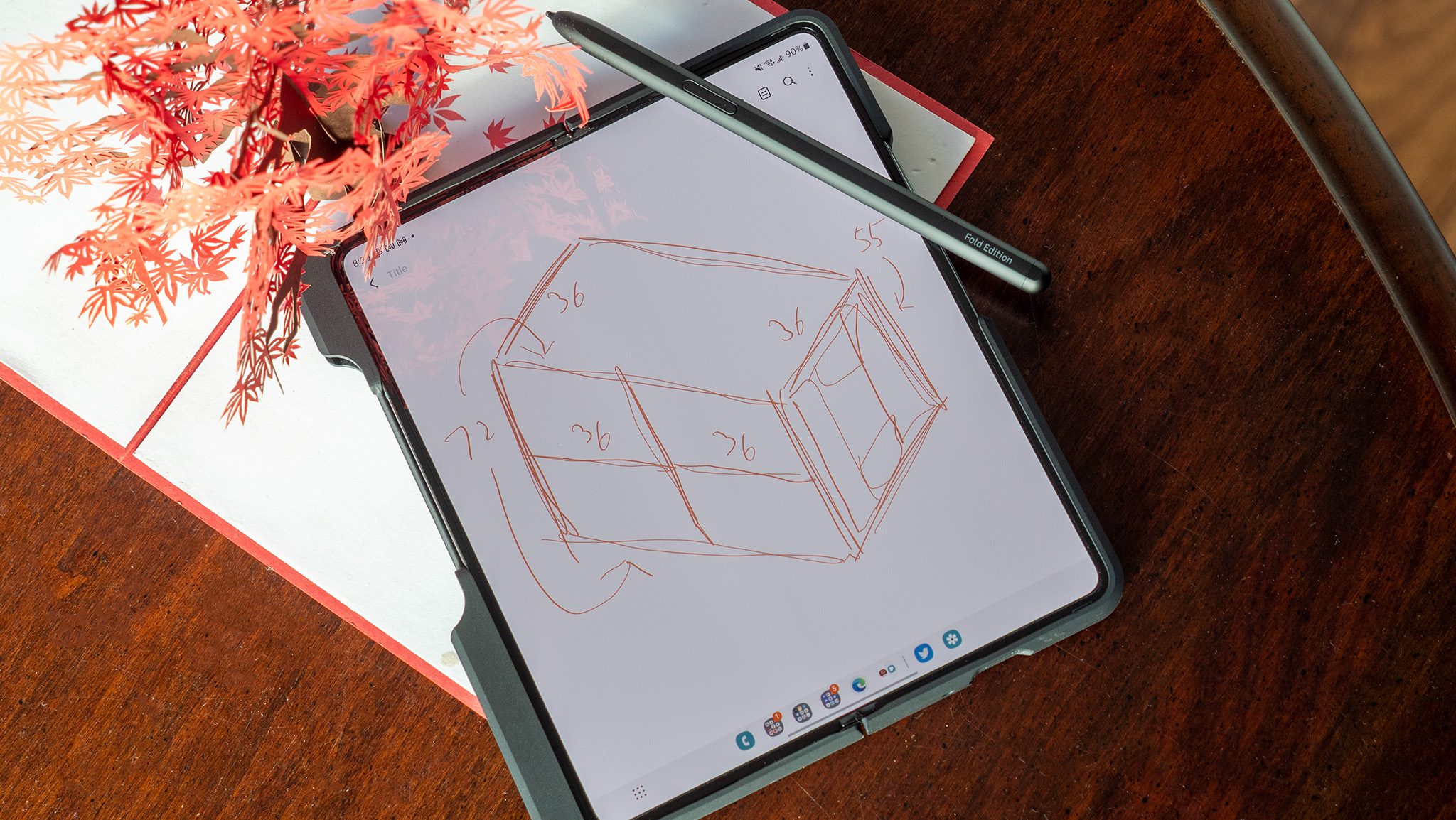
Last year, I called the Fold 3 the true heir to the Note throne. While I still feel like the Fold is the superior Note device because of the larger display, there's no doubt many Note fans will prefer the Galaxy S22 Ultra because the S Pen actually has a holster.
While the Fold 4 still doesn't have any sort of holster for the S Pen, Samsung now makes a better Note-style case that has a holster on the back for the S Pen. Additionally, case manufacturers like Caseborne and Spigen make cases with S Pen holsters in the spine, on the back, or even on the right side of the case.
These cases all add bulk to an already large and bulky phone but, if you're a stickler for having one device that does it all, there's no doubt the Fold 4 will provide an experience closer to that ideal than any other device currently on the market.
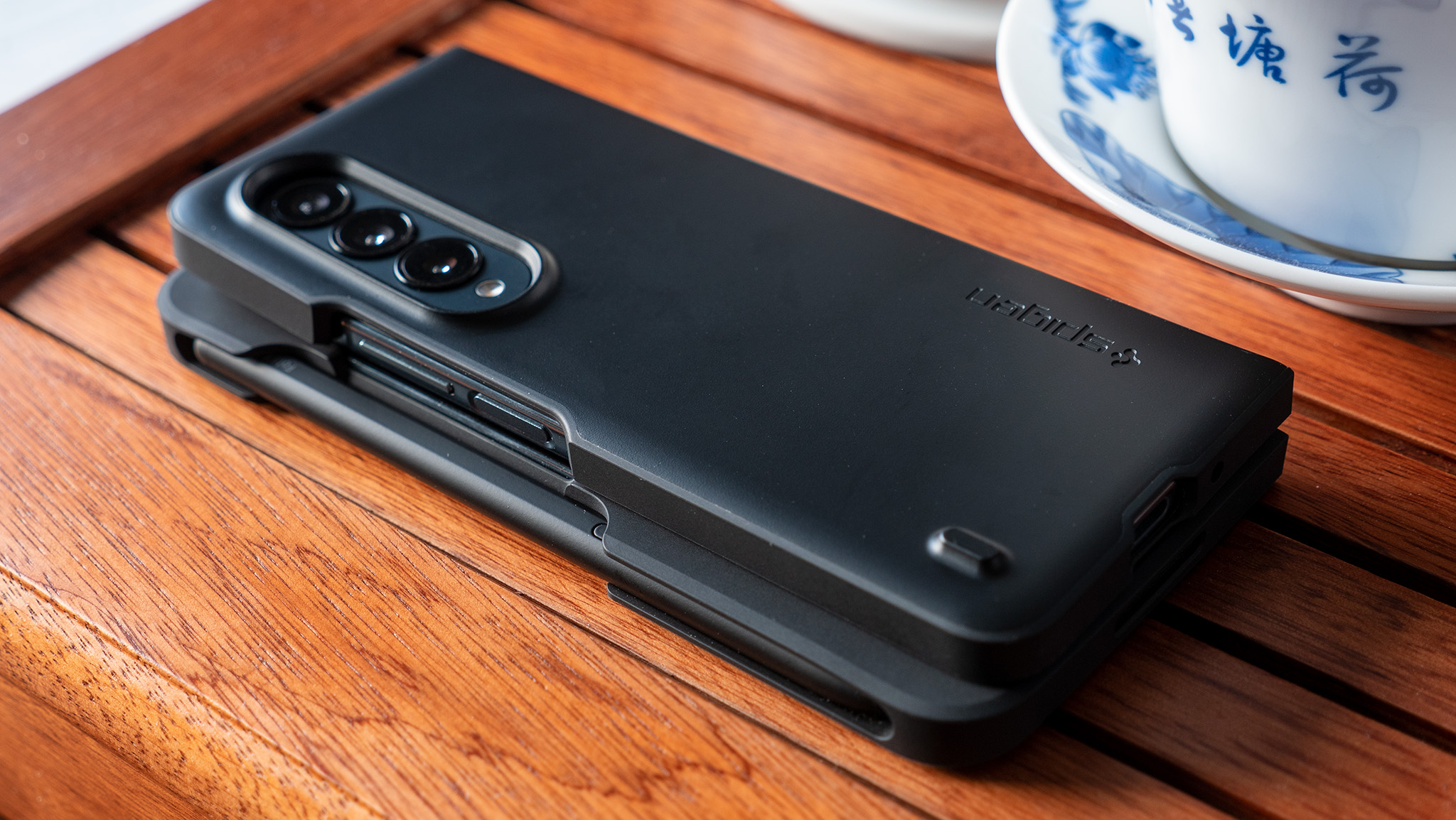
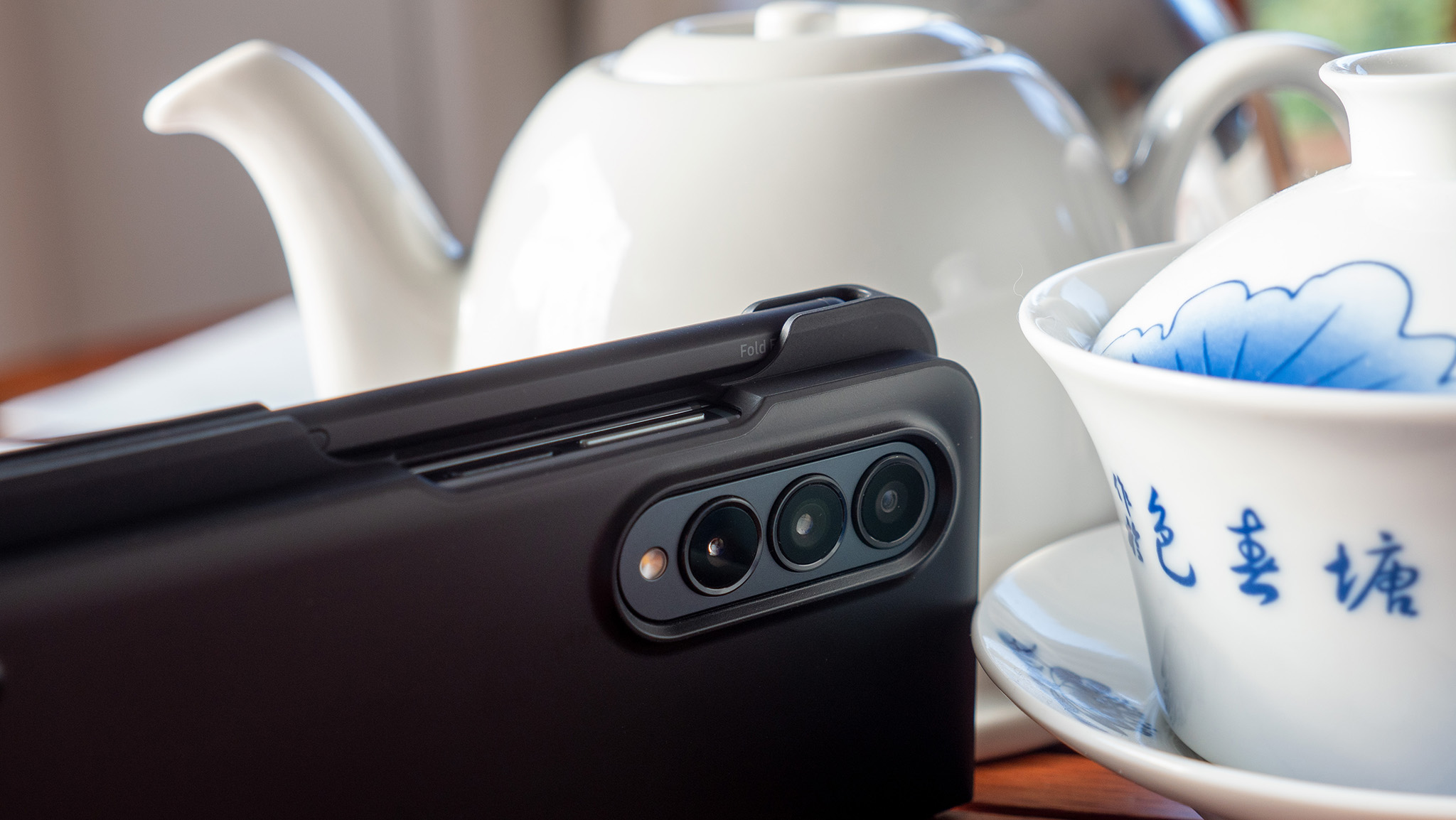
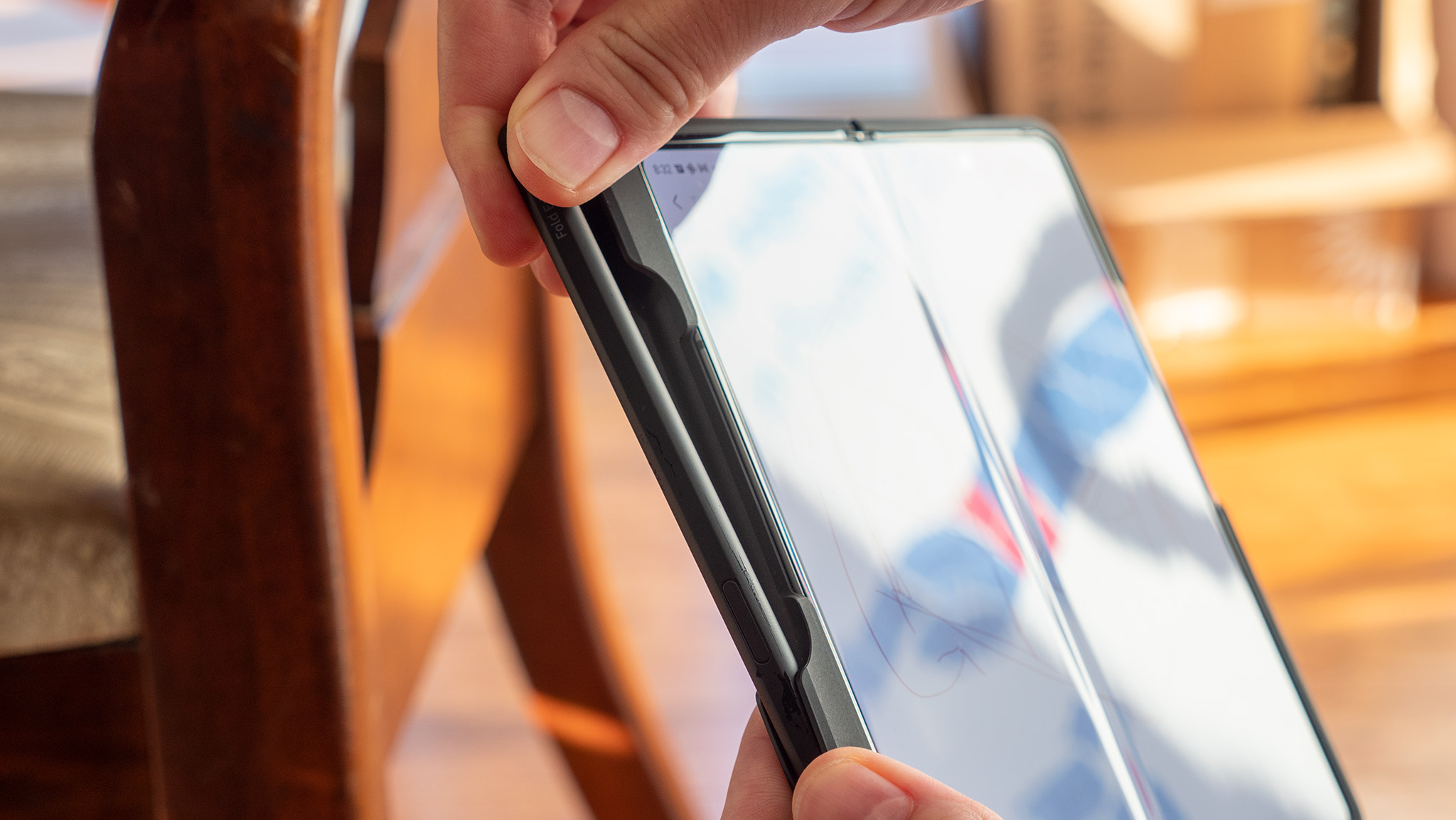
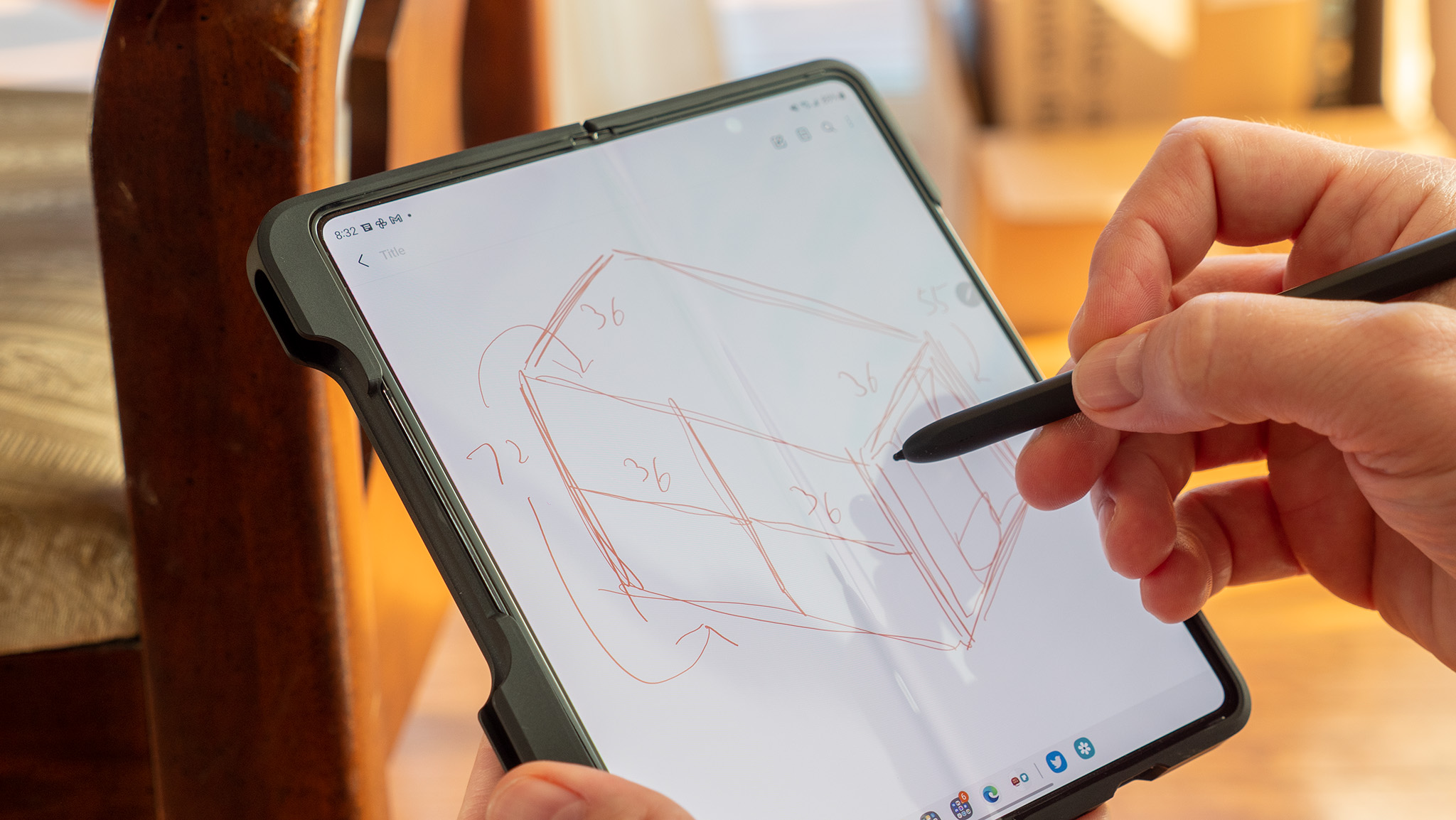
During the review period, I used Spigen's Thin Fit P case (pictured here), which gave me immediate access to the S Pen at all times. I noticed that I used the S Pen far more because of this added convenience, and absolutely recommend such a case to anyone who loves using the S Pen.
Additionally, Samsung is makng the S Pen Fold Edition in two new colors this year that match the Fold 4's colorways. It's a nice touch that looks nicer and better lines up with the Note's style aesthetics. Note phones have long since shipped with S Pens of the same color as the device they're holstered in and now the Fold is no different.
The biggest downside to the S Pen on the Fold 4? It still doesn't work with the cover display. More than once, I found myself trying to tap on it only to recall that this isn't possible. Only the foldable inner display has S Pen support. I'd love to see Samsung add this in a future iteration of the Fold.
Samsung Galaxy Z Fold 4: Performance and battery life
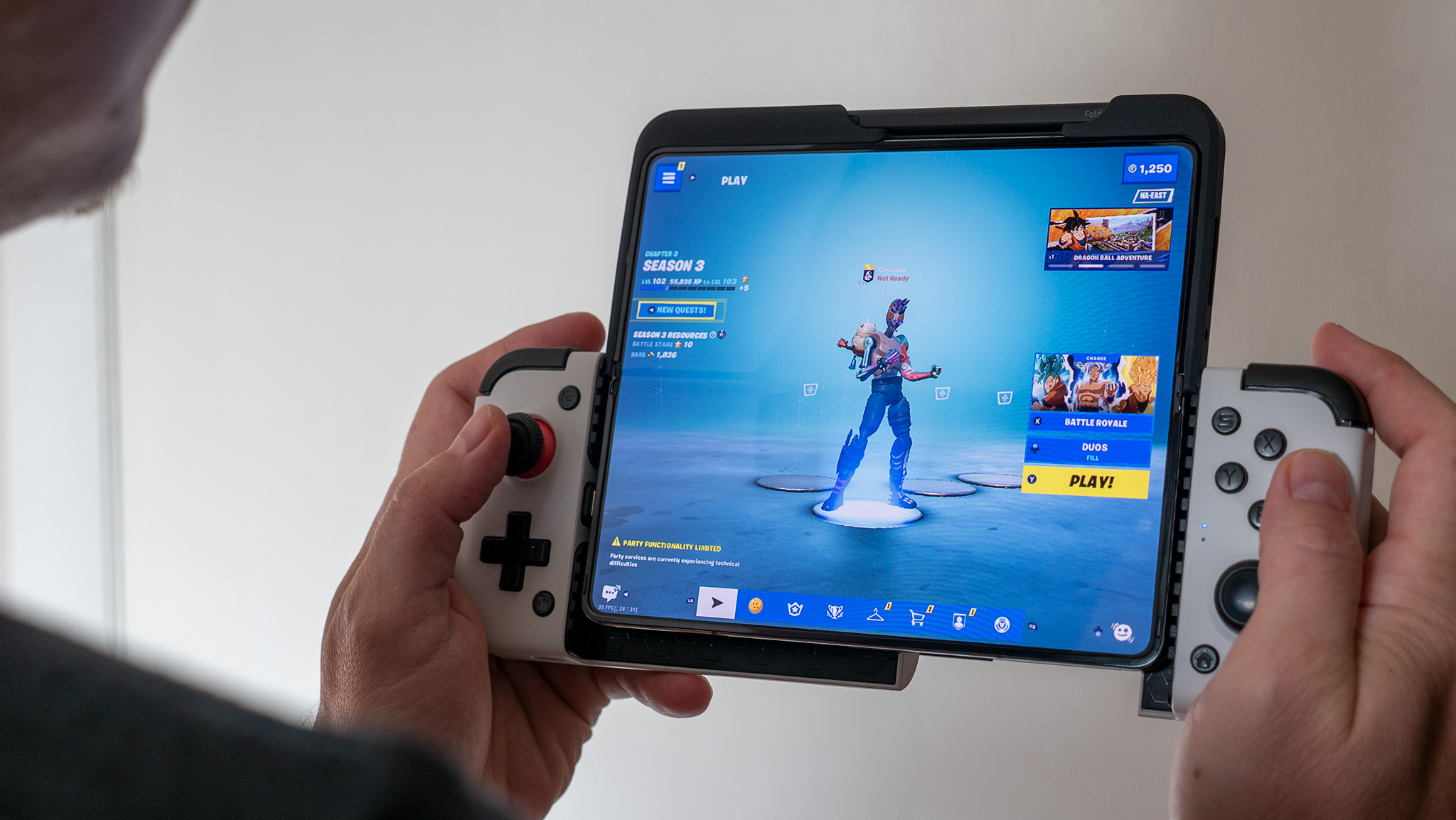
The Snapdragon 8+ Gen 1 does a much, much better job of delivering consistently excellent performance than the Snapdragon 8 Gen 1. It also doesn't get hot!
The Fold 3 may never have felt like a slow device at any point in its lifetime, but the Snapdragon 8+ Gen 1 in the Fold 4 makes it feel even zippier than before. That's great given the new taskbar on the big screen that prioritizes multitasking like never before.
It's also important because, as we've pointed out in many phone reviews this year, the Snapdragon 8 Gen 1 SoC doesn't hold up to its promises of better performance than 2021's SoCs under heavy load. Thankfully, the Snapdragon 8+ Gen 1 does a much, much better job of delivering consistently excellent performance, and somehow not getting hot at the same time.
30 minutes or longer with any game shows consistently great framerates throughout the experience, and the Fold 4 doesn't get particularly hot to the touch, either. It was great to get an experience that was as consistent as the Fold 3’s Snapdragon 888 — that means the game ran smoothly and didn’t stutter or drop the framerate constantly as many Snapdragon 8 Gen 1 phones will — and still get the better overall framerates from a newer processor.
It's a massive improvement in these circumstances over just about any flagship Android device released in the first half of 2022. However, you probably won't notice the difference while scrolling through social media or browsing the web.
Samsung didn't increase the battery size from the Fold 3 to the Fold 4, but you'll still get better battery life on the newer phone. That's, once again, thanks to the Snapdragon 8+ Gen 1 and its superior energy efficiency rating.
That’s a huge relief coming from the Fold 3 which, by all accounts, didn’t have great battery life. Over the past week, I’ve made a trip to New York City, played several hours of Minecraft and Fortnite, drove up to Mount Pisgah on the Blue Ridge Parkway and took lots of photos, and even went out in the wee hours of the morning to work on the camera review of the Fold 4.
Despite these grueling conditions, there wasn’t one day the Fold 4’s battery failed to live to see the end of the day. That’s absolutely not something I could ever say about the Fold 3 on a busy day, and it shows just how much more power efficient the Snapdragon 8+ Gen 1 chipset is than anything from this year or last.
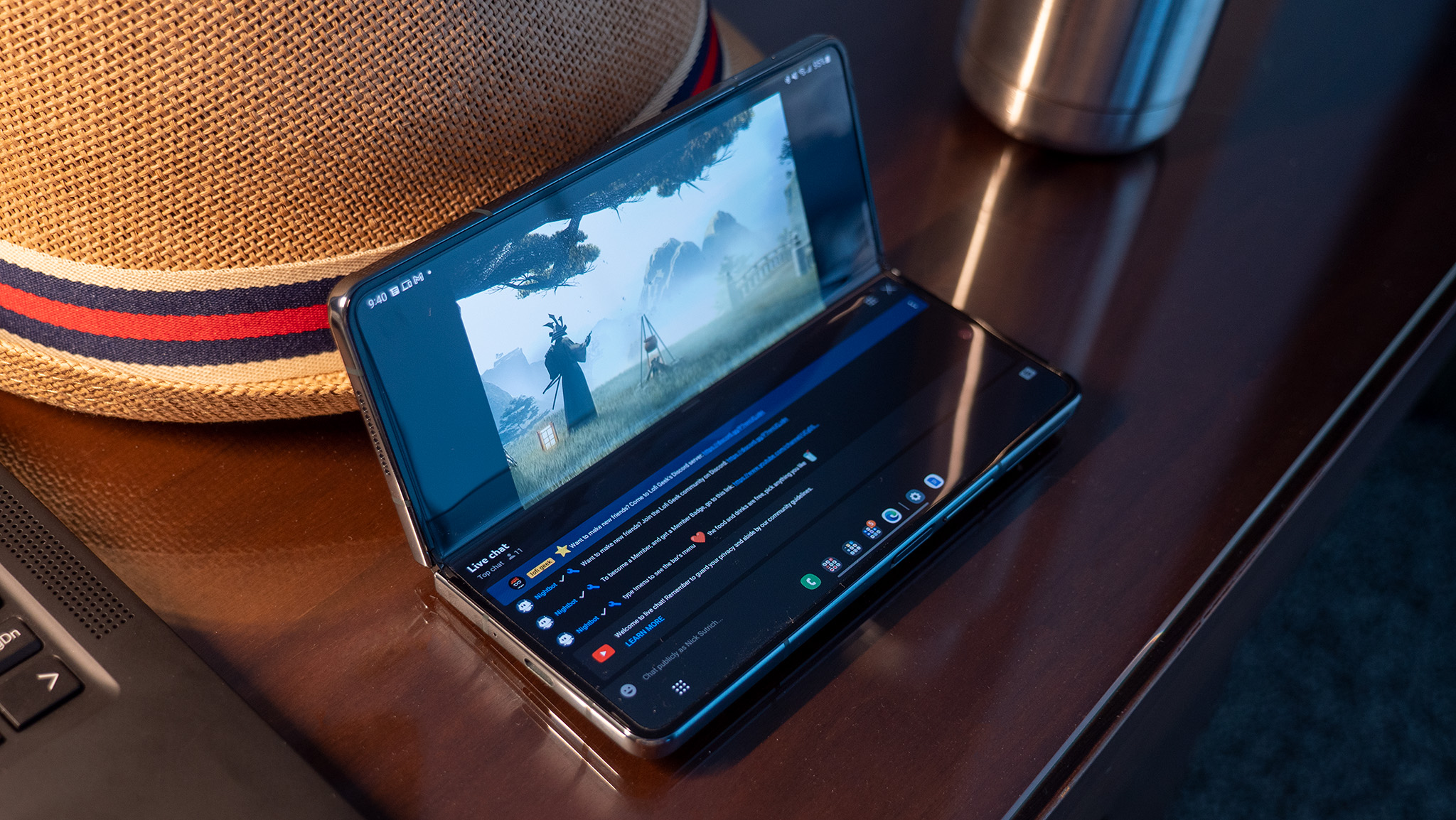
In our lab tests, the Fold 4 lasted up to three hours longer than the Fold 3 on a single charge.
To get more scientific, the results from battery rundown tests — a lab test from our parent company, Future — the Fold 4 lasted up to three hours longer than the Fold 3 on a single charge when running at 60Hz. At adaptive refresh rate — that's up to 120Hz, depending on what's happening on screen — the battery life difference was reduced to just an hour better. Even still, this is impressive given that Samsung didn't increase the battery size at all.
Folks who need to eek a bit more time out of the battery can opt to set the phone to the new low power mode, which scales the processor back about 100MHz at its peak and prioritizes thermals over performance. Despite this, I couldn't tell the difference in performance in any app that I tried.
Samsung specifically notes that this Low Power mode doesn't affect gaming, but I didn't find this to be the case. While playing Fortnite on low power mode, I noticed the framerate would consistently drop over a 30-minute period. After that timeframe, the game would run between 24 and 30FPS, depending on what was happening on screen.
The new low power mode helps the phone get through a few more hours in a day and doesn't affect everyday performance.
On regular power mode, the game ran between 50 and 60FPS without significant stuttering or frame drops. I didn't notice the phone getting overly hot in either of these power modes, unlike nearly every Snapdragon 8 Gen 1 phone we've tested. As Michael noted in his Galaxy S22 Plus review, the phone often "felt...like I'd left it in the sun on asphalt" when playing games. That phone isn't alone, by any means.
Just as advertised, low power mode helps get the phone through even more hours on a single charge.
Charging, too, is notably faster, even if it’s only “fast” by Samsung standards. True to what Samsung told us, a 30-minute charge added 50% to the battery’s capacity, which is enough to get through roughly half a day’s worth of normal use. Phones like the OnePlus 10T can charge to 100% in that same timeframe, though, so Samsung still has a ways to go if it ever wants to claim to have super-fast charging times.
Samsung Galaxy Z Fold 4: Software
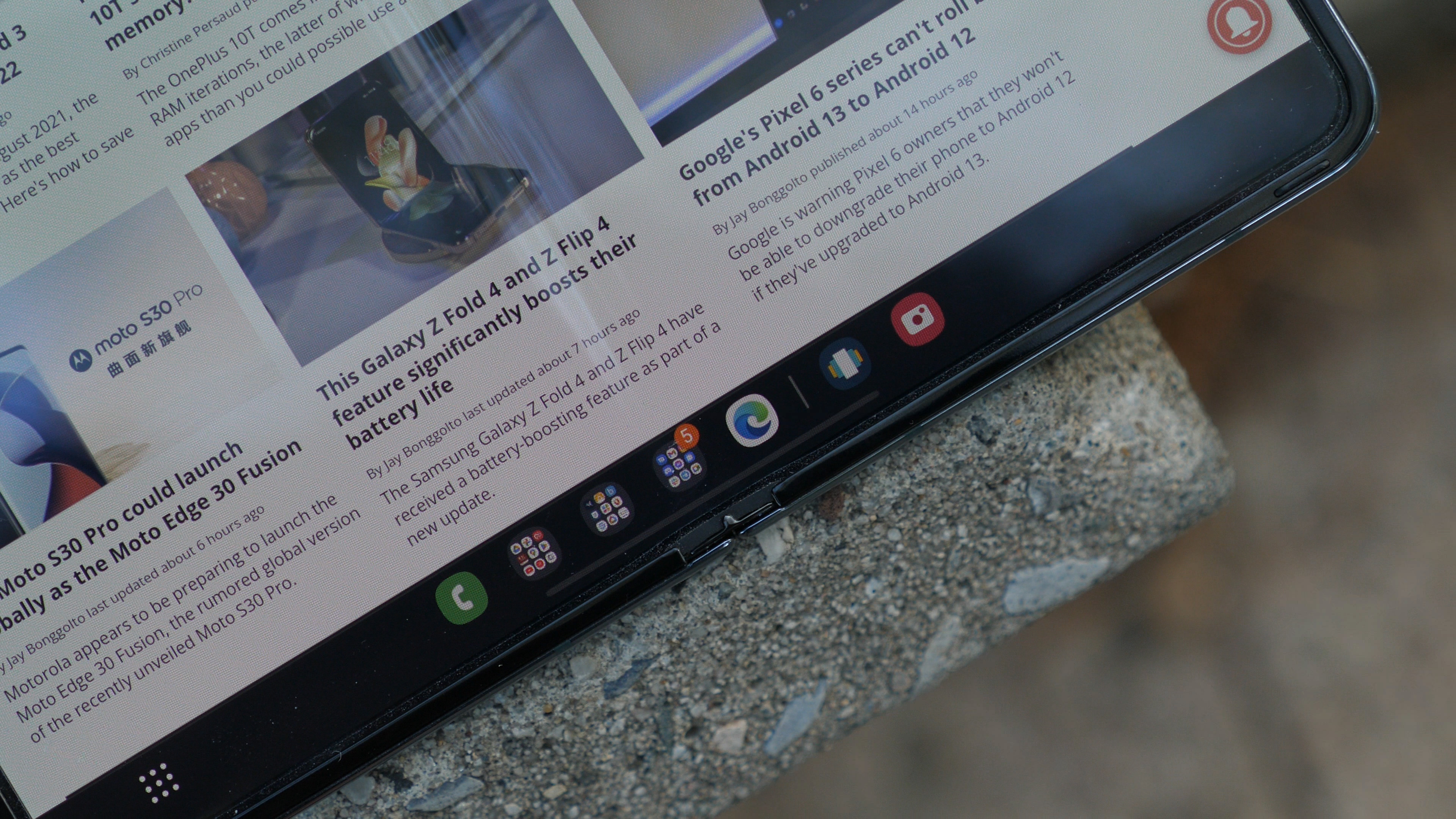
This year’s Z Fold release doesn’t come with a slew of new software features like we saw last year, but it does launch with one big headlining feature: a taskbar.
Yes, that’s a taskbar similar to a desktop or laptop PC, and it’s probably my favorite Fold-specific feature since the launch of the original Fold four years ago. With it, the Fold’s true potential finally feels like it’s been unlocked.
Functionally, it’s a bit similar to the Edge panel that has been on Samsung phones for years, but with the added presence of being always available on the large inner display. The taskbar is split into two main sections separated by a | (pipe) character.
To the right of the pipe, you’ll find icons for the last two apps you’ve used. A quick tap will swap between them, and is a quicker way to multitask between three full-screen apps than any previous method.
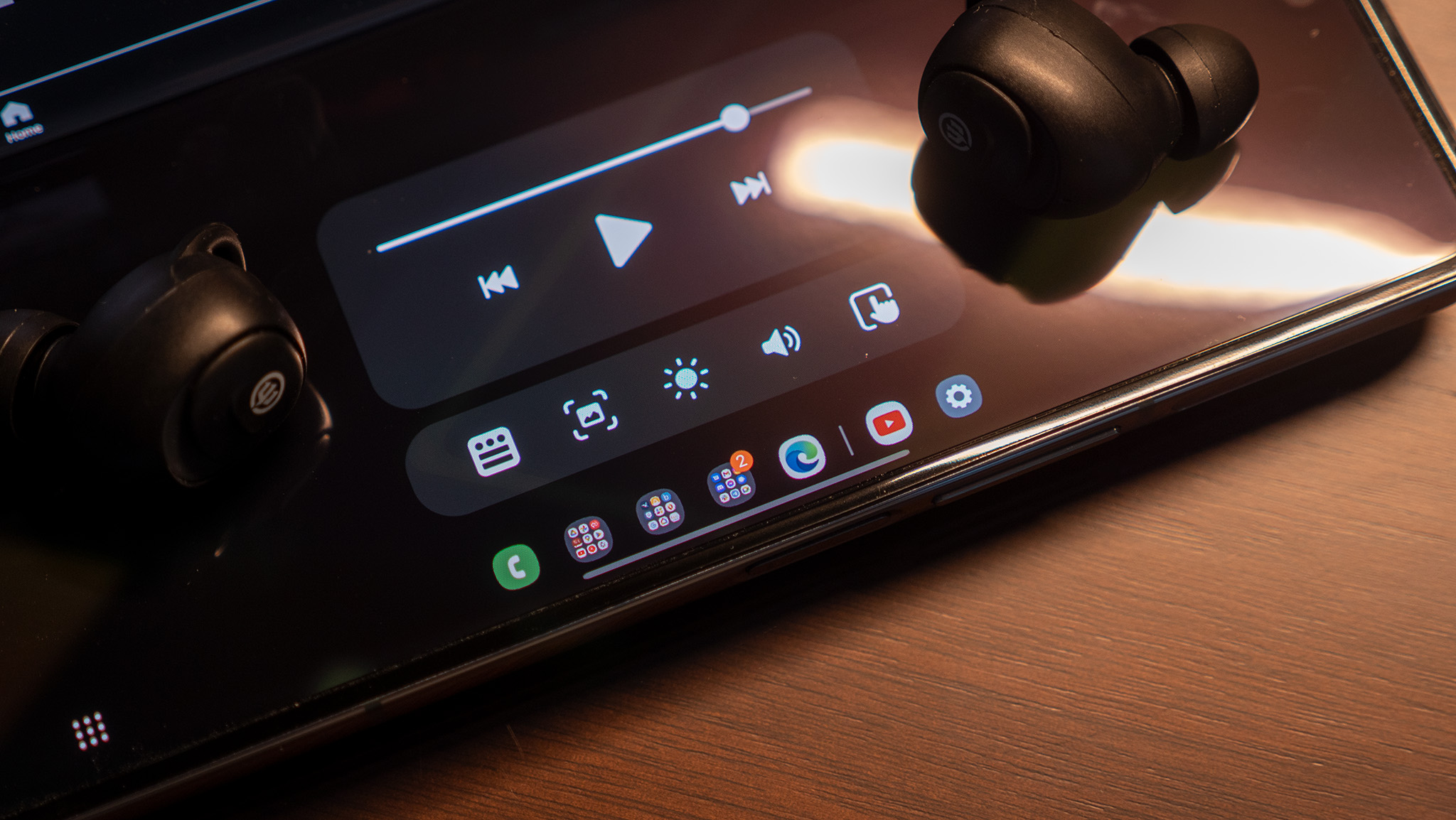
The taskbar is my favorite new software addition to the phone and makes it a true multitasking beast.
To the left of the pipe is a mirror of your pinned home screen apps. In my case, I have three folders with various apps in them, flanked on the left and right sides by Edge and the Phone app. If what I’m looking for isn’t located in those groups, I can always tap the app drawer to the leftmost side of the taskbar to get a compact list of every app installed on the phone.
In essence, it takes only two taps from anywhere to access any app on the phone, and that’s simply amazing for any power user.
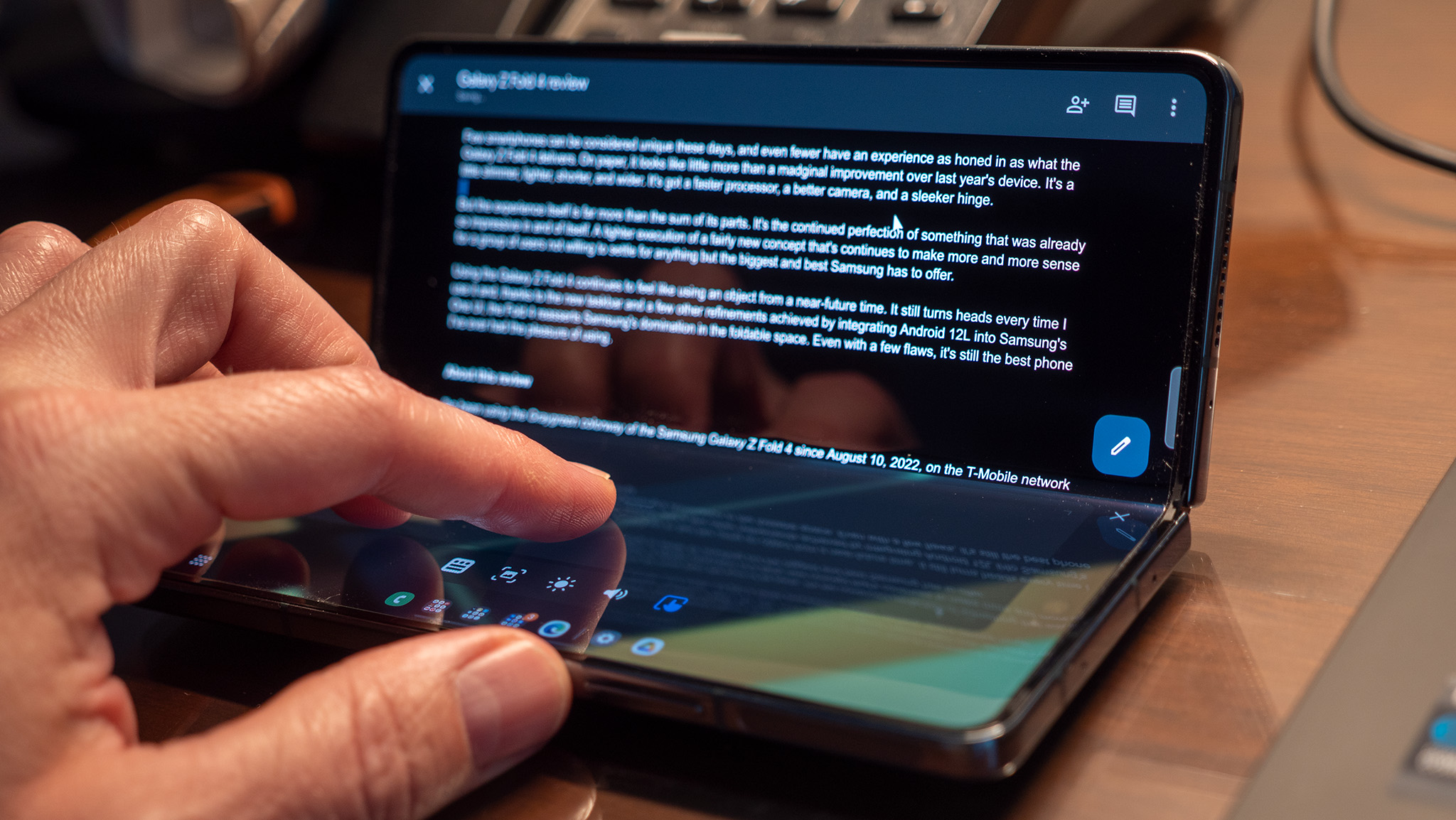
The Fold 4 and Flip 4 are the first phones to ship with the foldable-centric Android 12L.
Samsung also enhanced Flex Mode on both the Flip 4 and Fold 4 by making the bottom half of the display work like a trackpad. This setting is automatically enabled when an app is in Flex Mode, which means the phone is not completely folded, but also not completely unfolded.
While this was a cute feature and might be useful in very specific circumstances, I couldn't find much use for it.
Much of the enhanced multitasking is because the Galaxy Z Fold 4 is the first phone to ship with Android 12L in the backend. In actuality, the taskbar is something taken from Android 12L, not a Samsung-specific feature per se. Still, this is the only place you can find it, for now, and it's simply brilliant.
Keep in mind, though, that a new OS with enhanced capabilities for foldables and large screens means that there are a few quirks that still need to be ironed out. While apps seem to scale better en masse when folding and unfolding the phone than they did on previous versions of Android, I ran across several weird UI issues that were very clearly bugs.
Once or twice, the keyboard got stuck behind the notification shade when I was trying to use the quick reply function on a notification. Other times, the taskbar would bug out and have no apps present on it. These were all solved by either swiping back to home and then swiping back to the app in question or, at the worst, I had to close the app and reopen it.
In total, I might have run across half a dozen times where these odd UI errors would occur. Certainly worth noting, but not something to complain about, in my opinion.
Samsung Galaxy Z Fold 4: Cameras
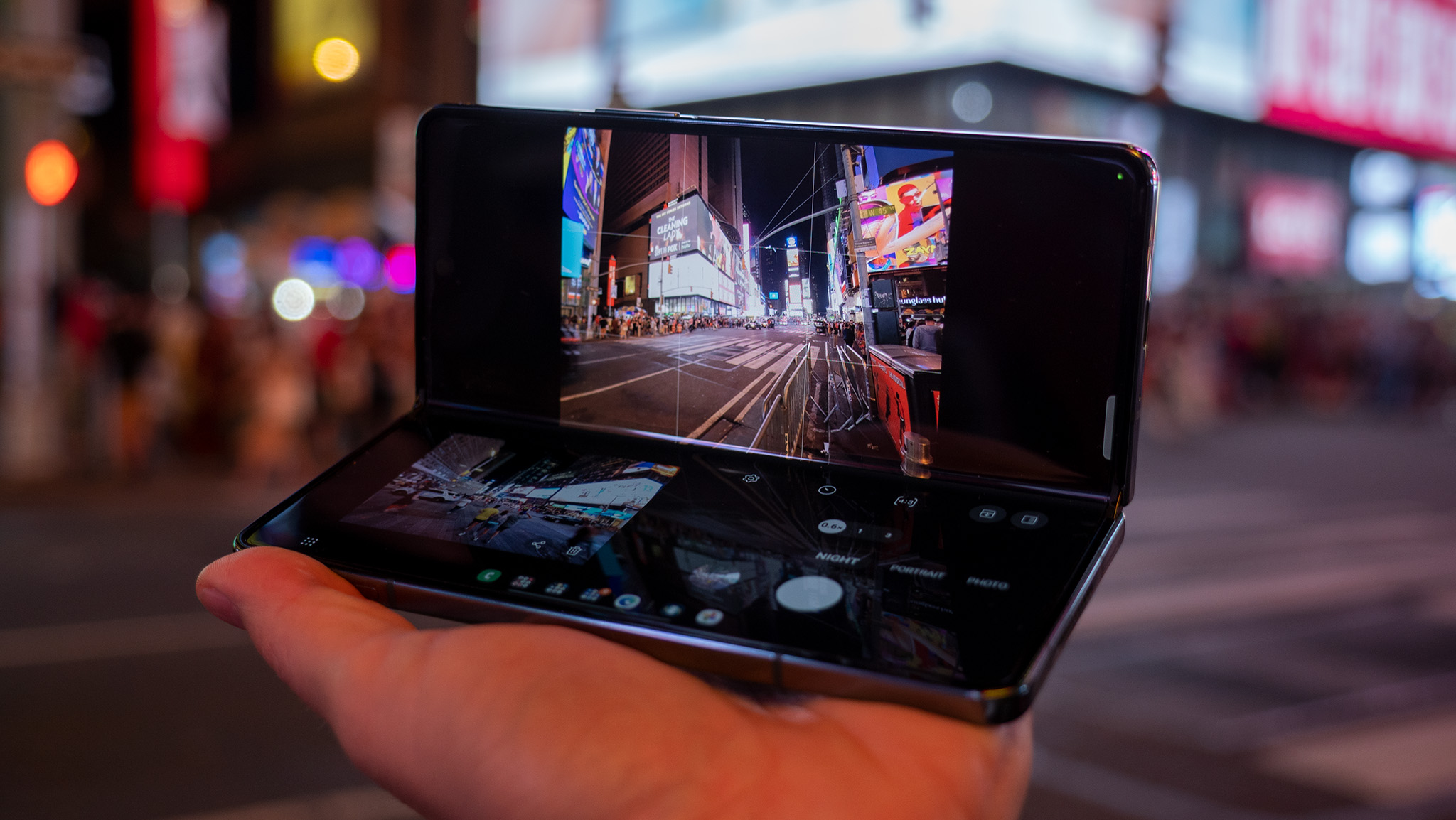
When I first got the Galaxy Z Fold 4, the first thing I did was put its cameras head-to-head against the Fold 3's cameras. Shortly after, I published our Samsung Galaxy Z Fold 4 camera review and noted just how much of an upgrade the camera was in nearly every situation.
In this review section, I'm going to highlight some of the most important parts of the Fold 4 camera experience. If you want to see all the in-depth details — particularly, if you're upgrading from a Galaxy Z Fold 2 or 3 — check out that separate camera review.
Over the course of the past two weeks, there wasn't a single time where I found myself wishing I had brought my Pixel 6 Pro along for the ride. If you've ever listened to the Android Central podcast or read my other reviews, you'll understand how big a deal that statement is.
In all situations, the Fold 4 wasn't just enough to get the job done. Its camera was an excellent performer in every way, shape, and form, and that's a triumph compared to last year's phone.
The only real weak point I found with the phone is, ironically, in bright light where the camera tends to overexpose shots just a bit. Hopefully, Samsung can get this fixed in an update but, for the most part, any photo that sees this minor overexposure can be fixed in a photo editing app with a tap or two.
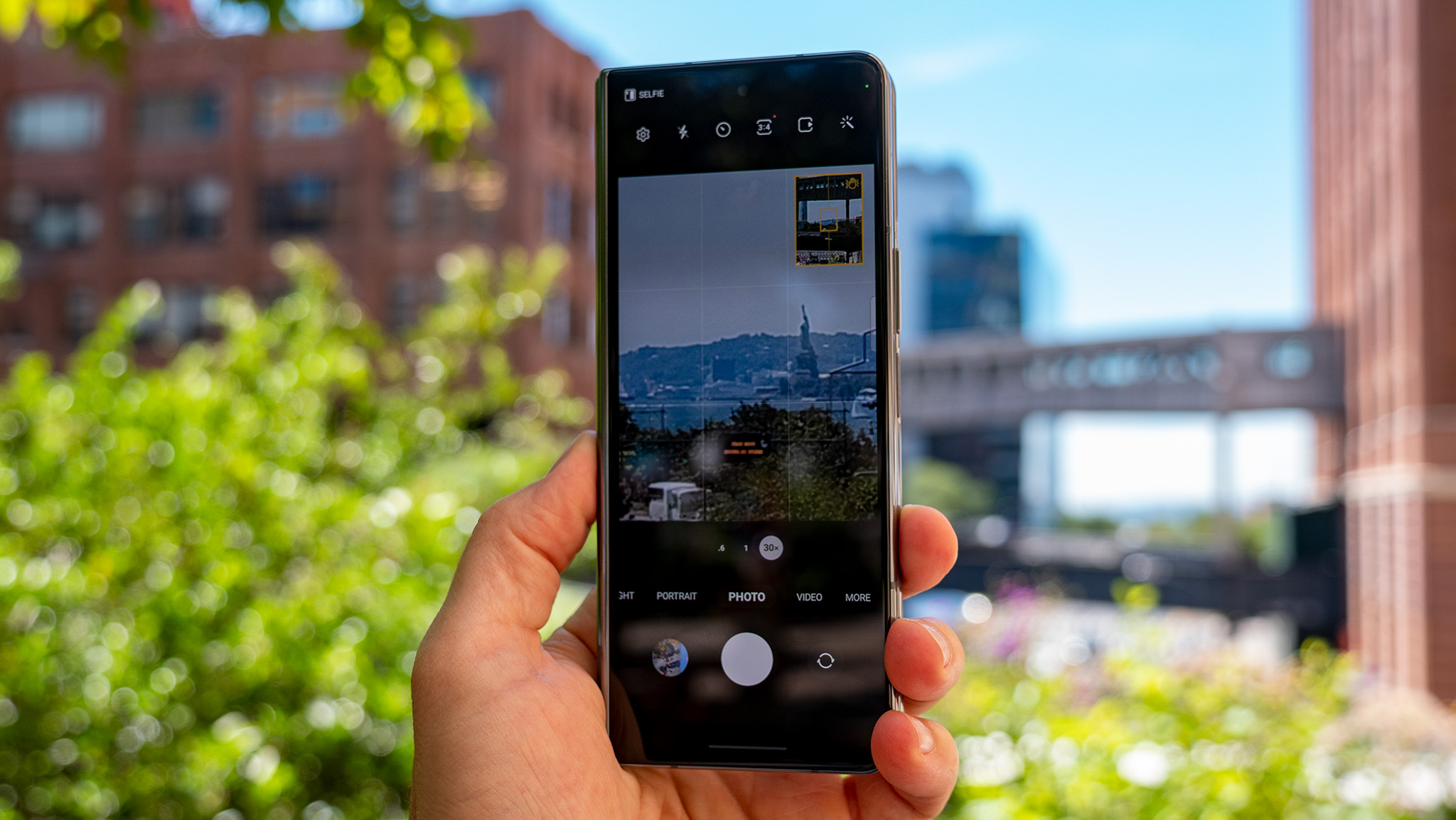
Among the biggest improvements is capturing motion, which has long been a problem for Samsung phones.
Among the biggest improvements is capturing motion, which has long been a problem for Samsung phones. I've chronicled this problem on many Samsung Galaxy reviews — the most recent being the Galaxy S22 Ultra — as the experience for folks who own pets or have children will be one filled with lots of blurry photos.
But when the Galaxy Z Fold 4 captures a child in motion or a pet playing? Most of the time, it produces a clean, clear picture that I simply didn't expect given historical results. This goes for both low light and daylight, using the main sensor or the telephoto sensor. It's an impressive improvement and deserves praise.
For this particular bit, I think Google still does a better job with movement than Samsung, but seeing this level of improvement in just a few months (compared to the S22 Ultra) is significant.

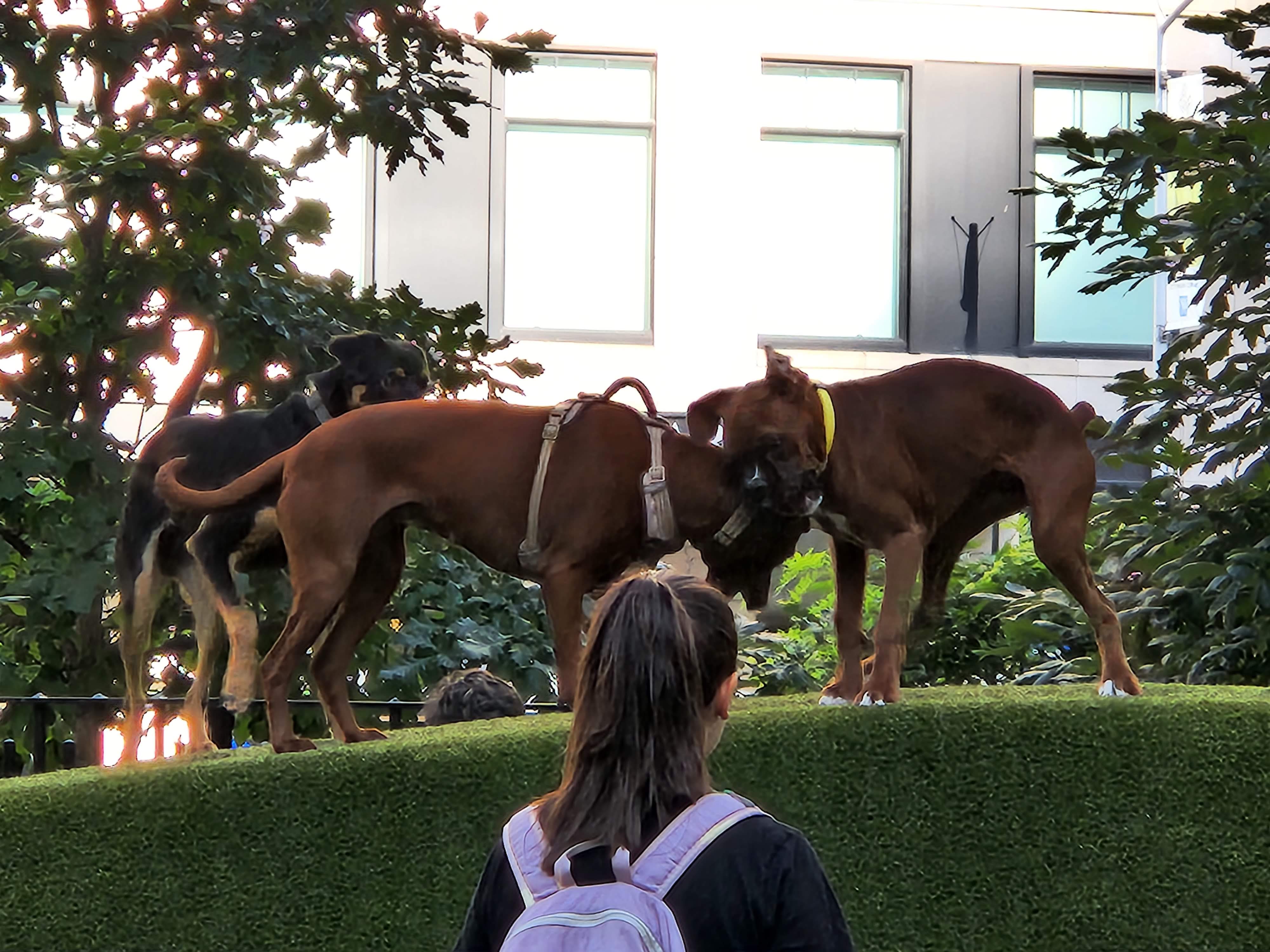
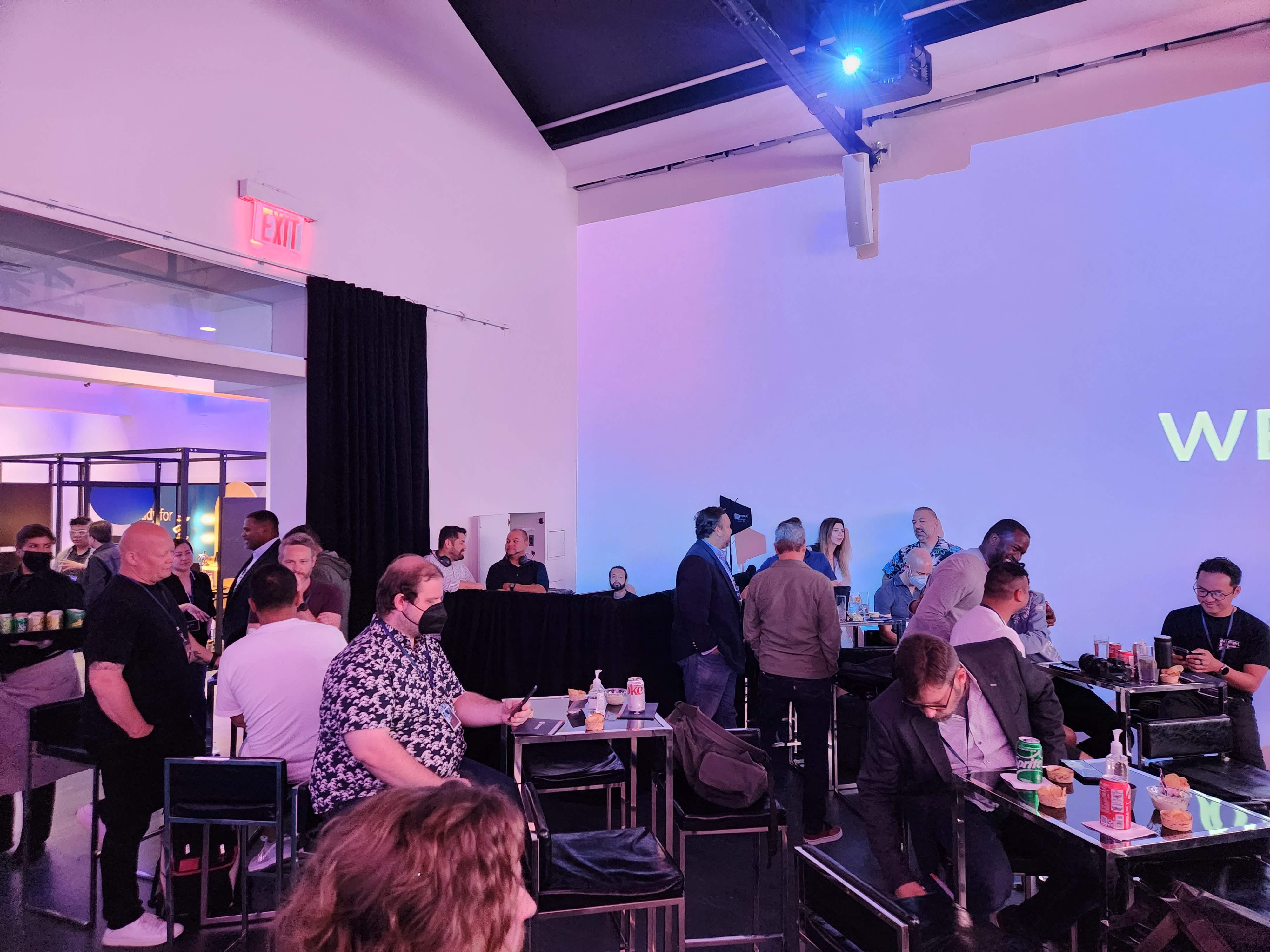
The Fold 4's 3x optical telephoto camera also doubles as a great macro lens which, for me, is preferable to a dedicated macro camera — or even an ultra-wide camera that doubles as a macro lens — as you can get great, detailed up-close shots without actually having to be up-close.


Space Zoom works incredibly well up to about 20x. Beyond that, results are very mixed but usually not great.
And the other huge improvement is the telephoto camera itself, which is now 3x optical zoom. That's compared to 2x optical zoom on the Fold 2. Plus, it's a newer, better sensor that utilizes Samsung's "Space Zoom" processing to help deliver clear shots from far away.
Realistically, you can take crystal clear shots up to 10x away. Here are a few samples I took at 10x zoom to prove the point.
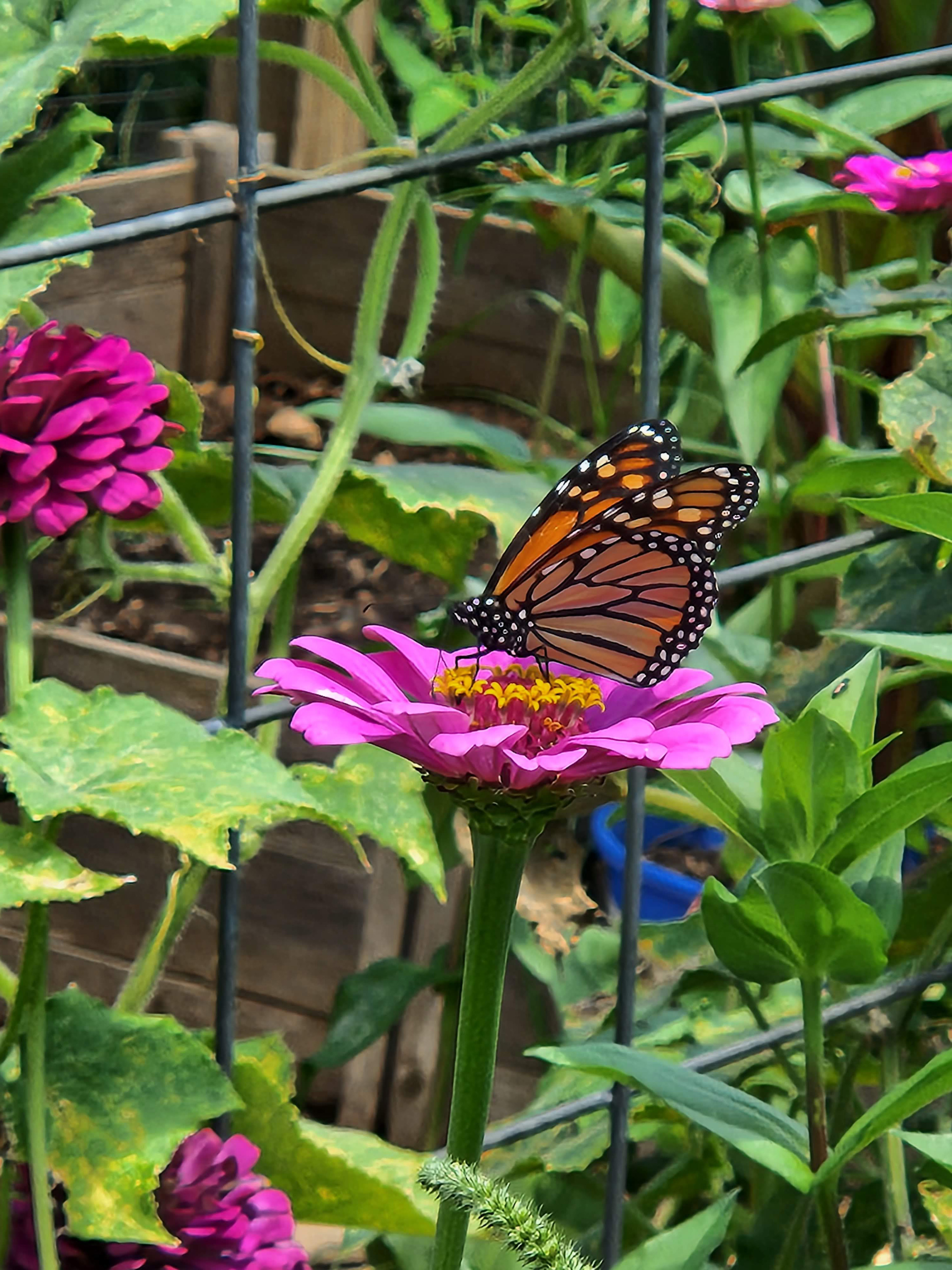



Space Zoom works incredibly well up to about 20x. Beyond that, results are very mixed, but usually not great. Samsung says the Fold 4 can zoom up to 30x away, but it's not likely you'll want to use these photos beyond illustrative purposes.
One shot I took of the Statue of Liberty looked downright awful from this distance. Meanwhile, the shot of the butterfly wasn't too bad, but that object was much closer to the lens than the statue was. Here are a few shots at 30x zoom to show what I mean.


Samsung Galaxy Z Fold 4: Competition
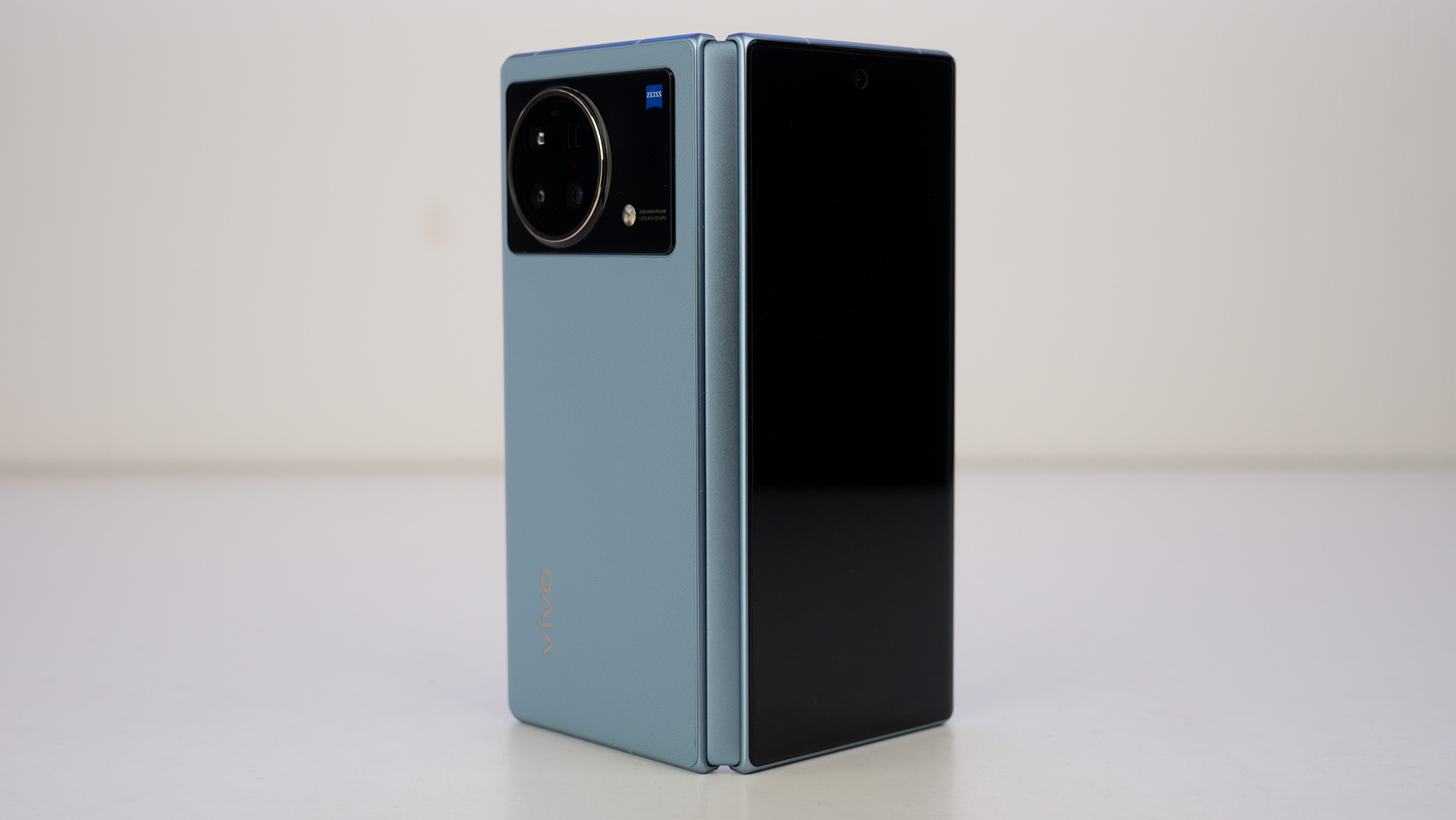
Samsung doesn't have much in the way of direct competition in the large foldables space outside of China. There, consumers have the choice of great phones like the Vivo X Fold, Xiaomi Mix Fold 2, and several other excellent devices that offer even better cameras or sleeker form factors than what Samsung offers.
In all cases, though, Samsung retains the software advantage and the honor of having water-resistant foldable phones.
In other countries, the only real competition is from Samsung itself. 2021's Galaxy Z Fold 3 is still a great phone to consider if you don't want to spend $1,800 on a Fold 4, as Samsung recently dropped the price of unlocked Fold 3's by $600. As folks will be upgrading to the Fold 4, it's also likely you could net a second-hand Fold 3 for quite a bit less.
If a larger foldable doesn't fit the bill (or your pockets), the Galaxy Z Flip 4 is a superb alternative to the Fold. It packs in the same software — minus the taskbar that's available on the larger Fold display — and even includes plenty of camera improvements and better battery life than the Flip 3. There's nothing quite like having a big old screen that you can fold in half and slip in any pocket.
Samsung Galaxy Z Fold 4: Should you buy it?
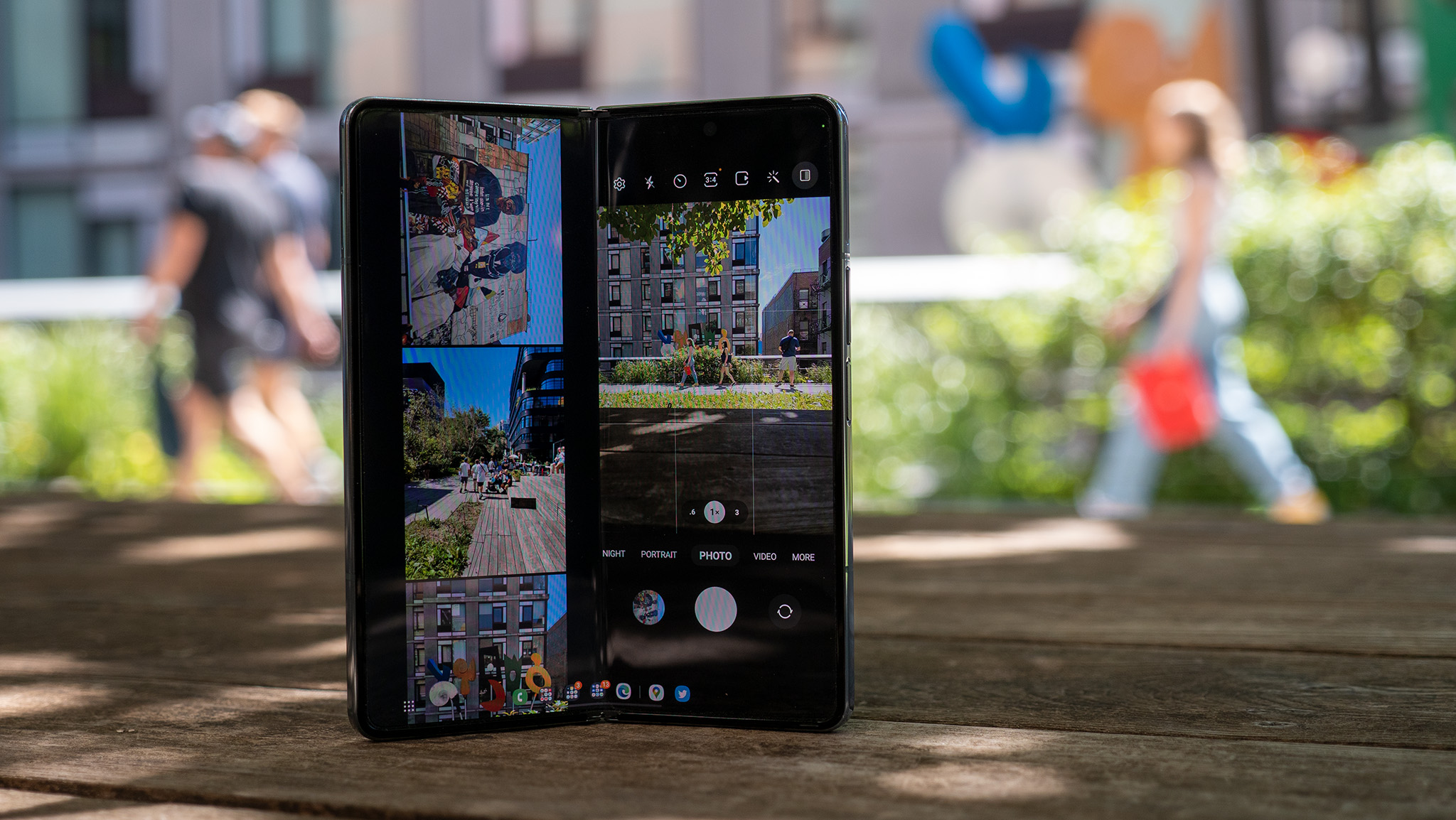
You should buy it if…
- You want the most feature-rich and powerful Android phone ever made.
- You like the idea of having a tablet that can fold in half (or just love using the S Pen on a big screen).
- You want a foldable phone with great cameras.
You should not buy it if…
- You don't want to spend nearly $2,000 on a new phone.
- You have small pockets or large displays aren't your favorite.
- You need a camera that can zoom in further than 20x and produce a nice photo.
For me, there are very few reasons not to consider upgrading to a Galaxy Z Fold 4. This phone does it all: from taking great photos and video, to multitasking between apps like a laptop. Battery life and performance are both better than last year's phone, and better than any 2022 phone Samsung has delivered so far.
Samsung's software expertise is simply unmatched in any category, too; not just foldables, but you'd be remiss to ignore the lead Samsung has in the foldable space. This doesn't just mean superb hardware that's a joy to use. It also means more mature software that works like you would expect, and this year's iteration is more about Samsung perfecting a formula than rewriting the rules.
Sure, it's still bloody expensive and will likely make anyone think twice before dropping this kind of cash on a phone. But replacing a phone and a tablet with a single device is a dream I've long held, and is finally reality thanks to the advent of the Fold series.
There's no doubt that such a powerful, large device isn't for everyone, though. Power users, gadget lovers, and productivity hounds will relish Samsung's software and hardware, but it's unlikely that even most users will need such a powerful, versatile device every day.
For most people, the Flip 4 probably makes more sense, but for me and folks like me, the Galaxy Z Fold 4 is a dream come true and the best phone I've ever used.
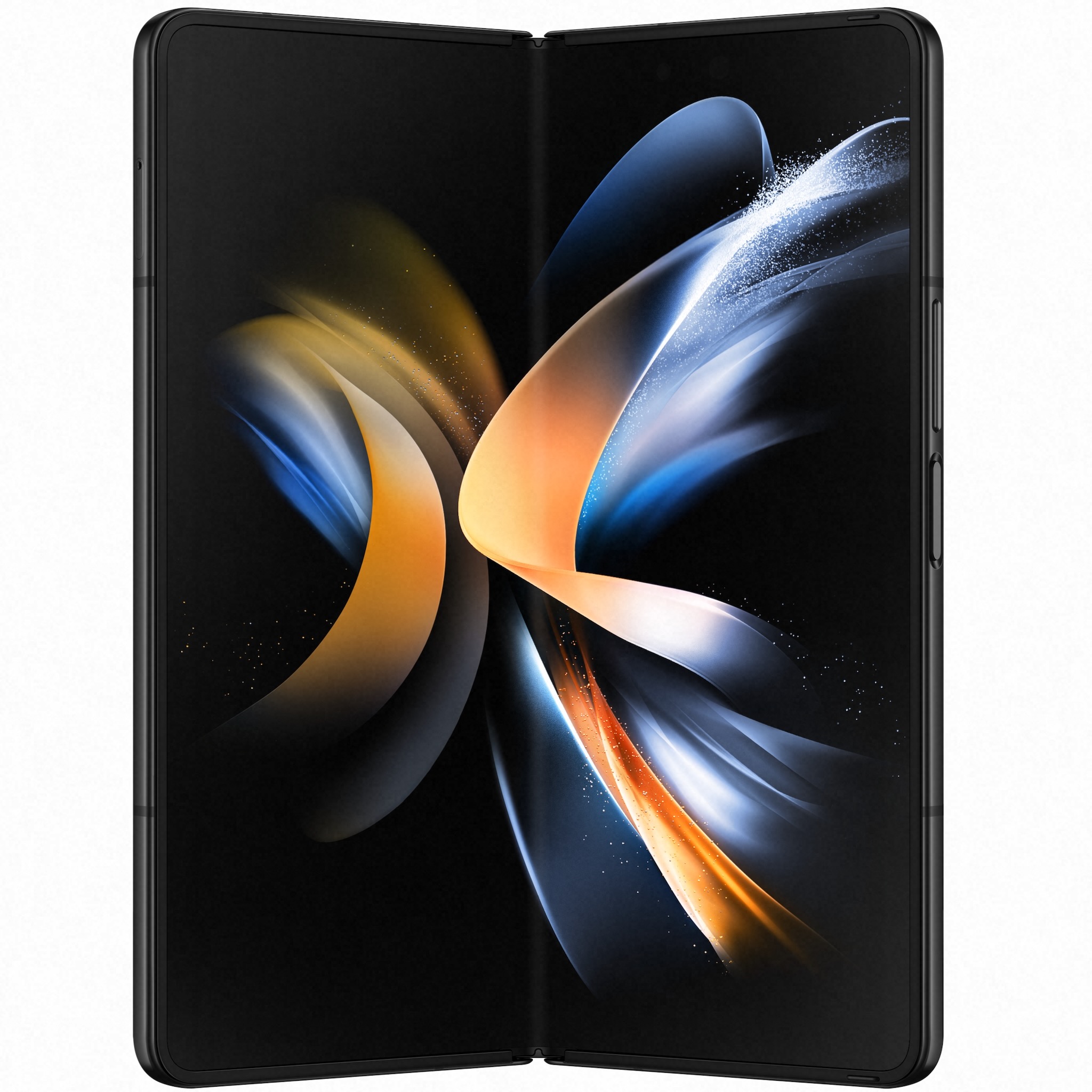
Samsung's fourth-generation foldable mini-tablet is a dream come true for power users. The new taskbar makes multitasking on the big screen easier than ever, and the Snapdragon 8+ Gen 1 processor provides more horsepower and better battery life than ever before, all without heating up the phone. Add in S Pen support and flagship-level cameras and you've got a winner.

